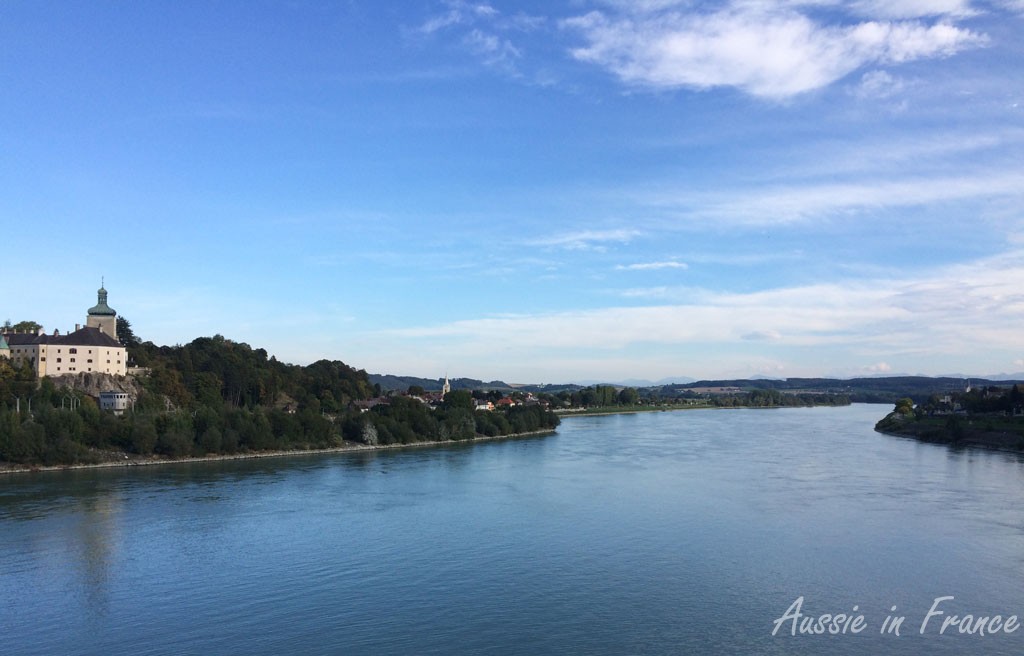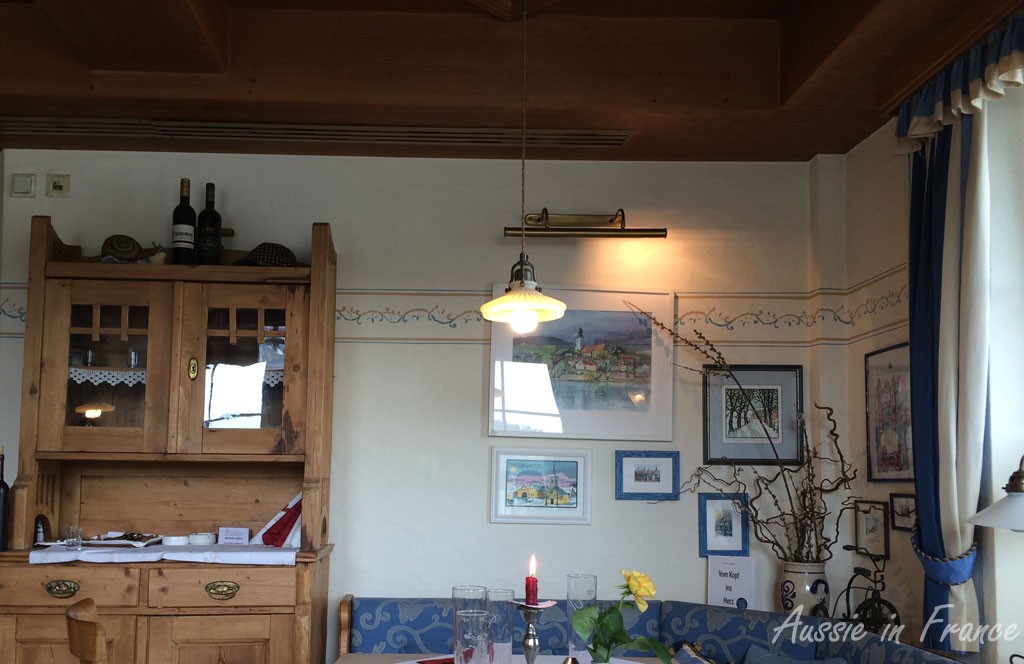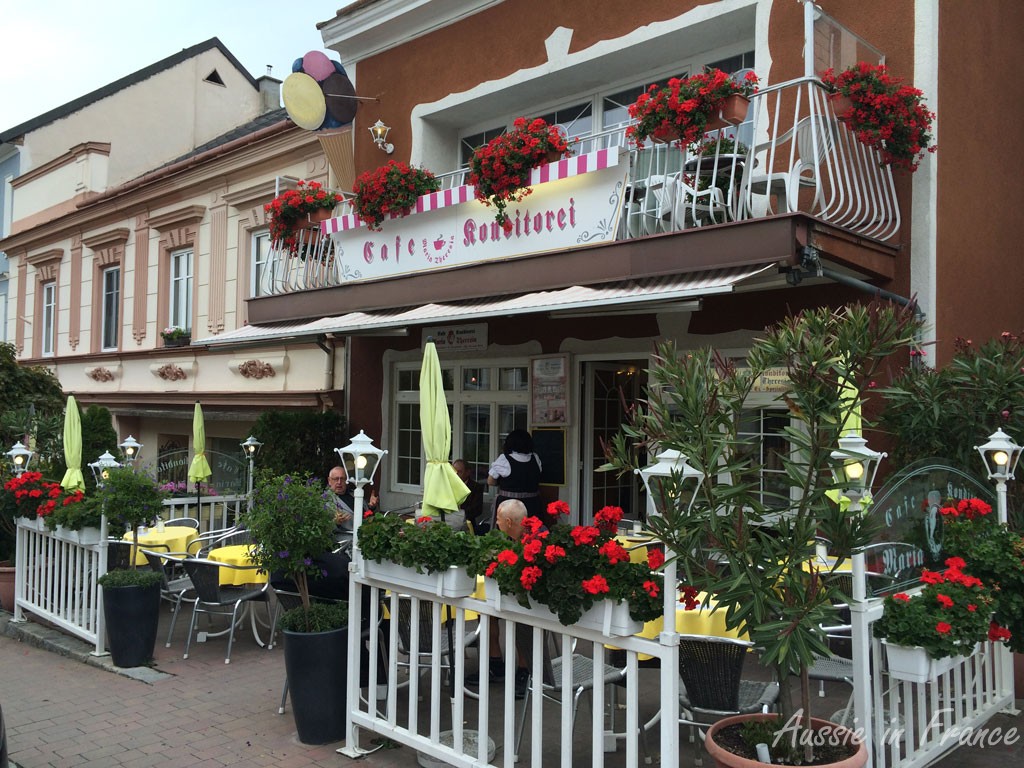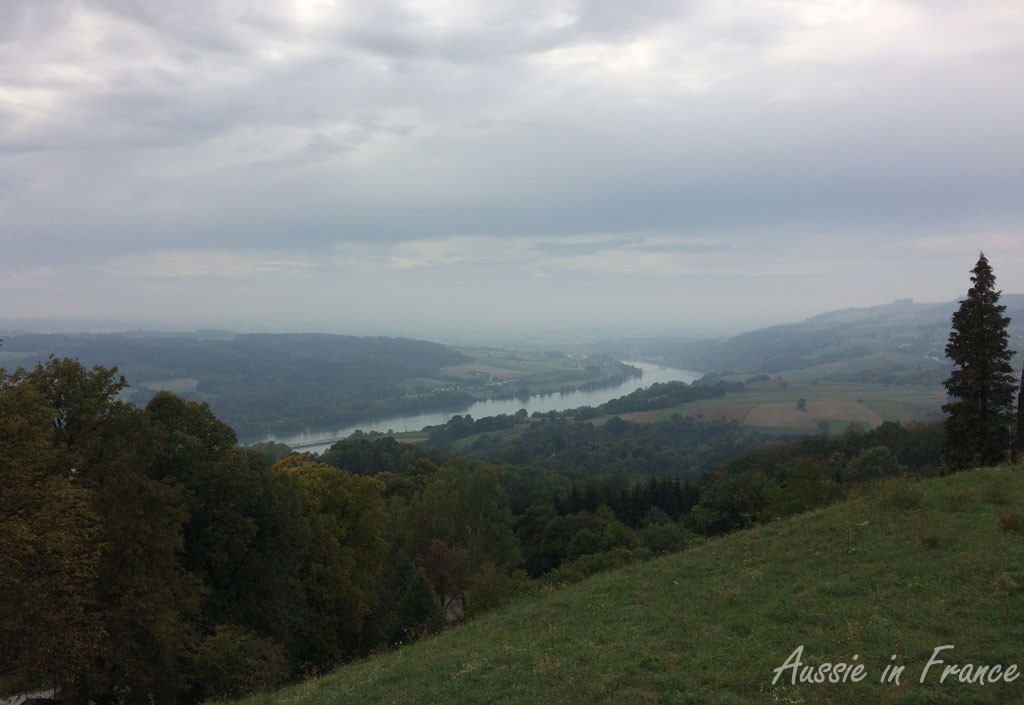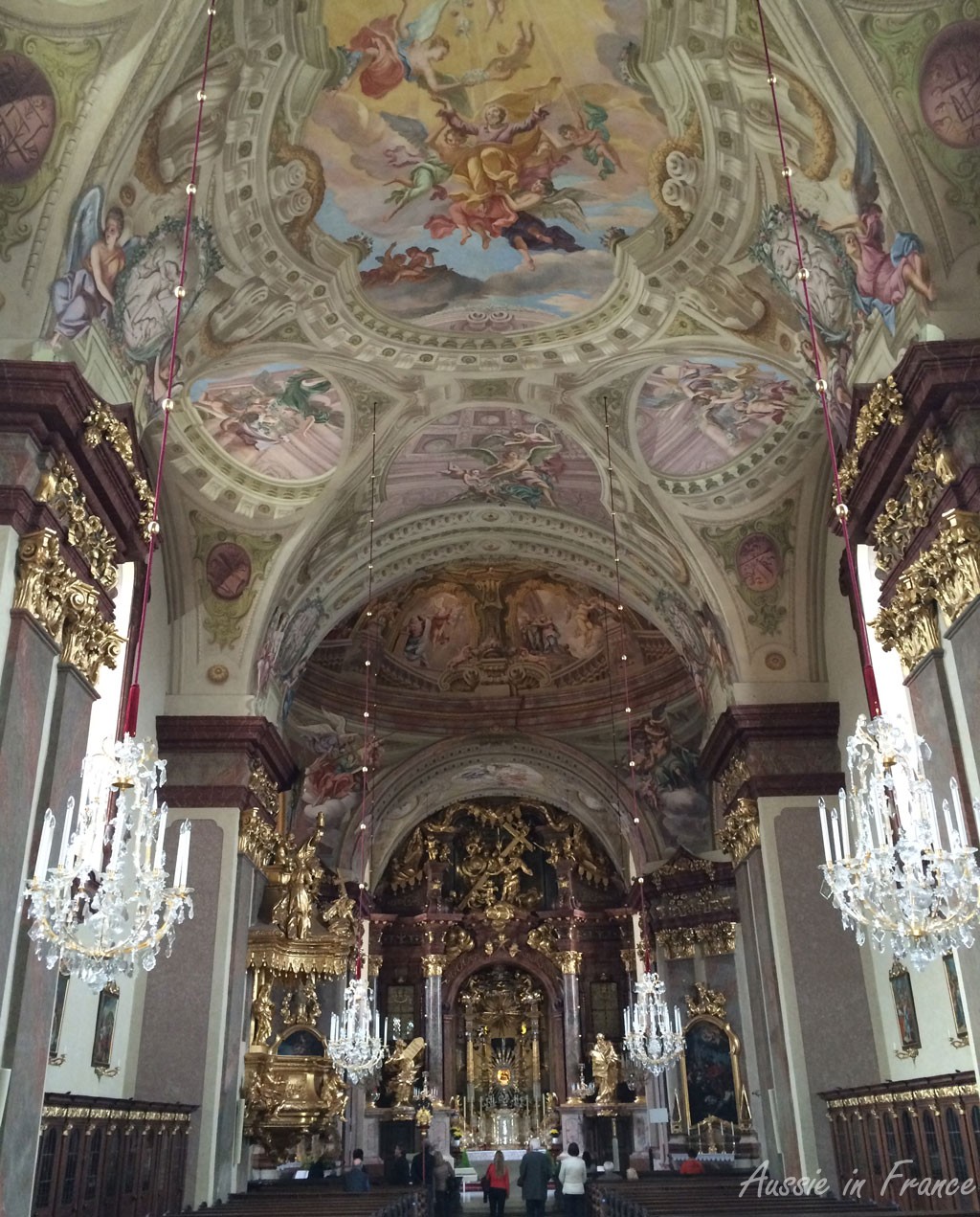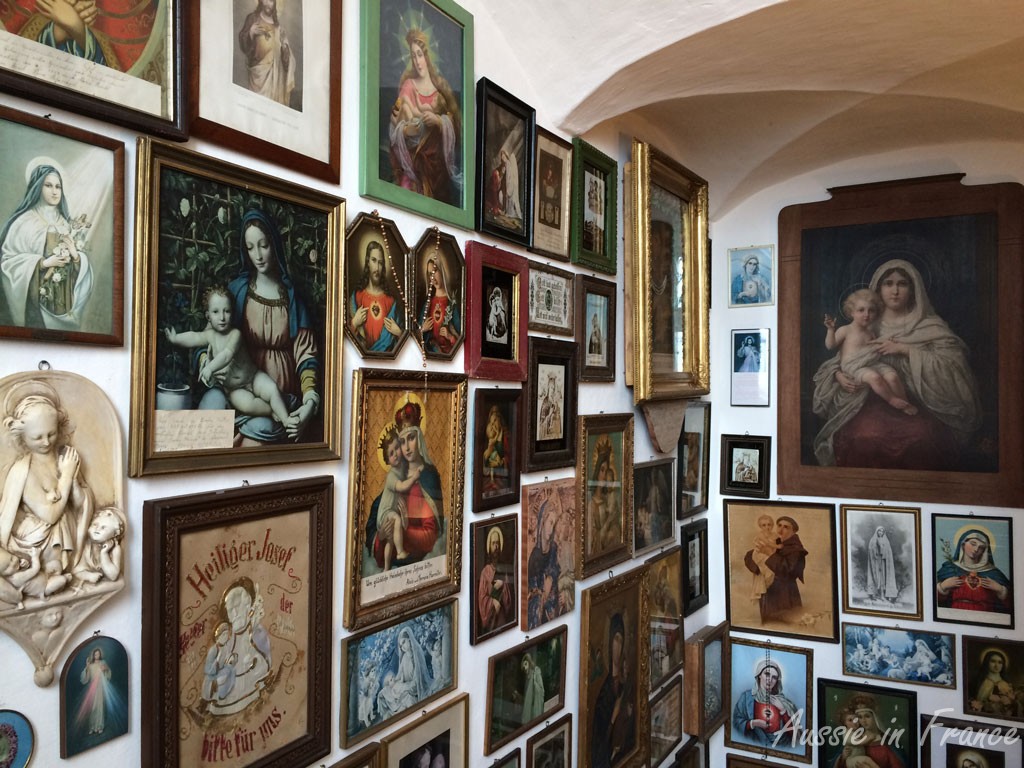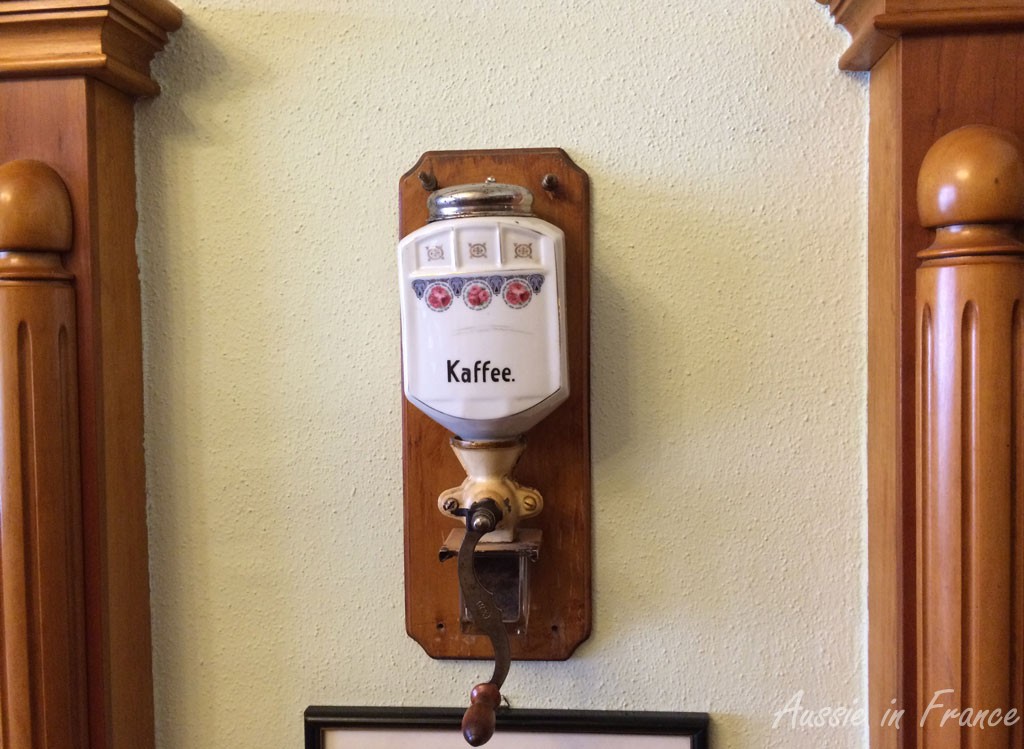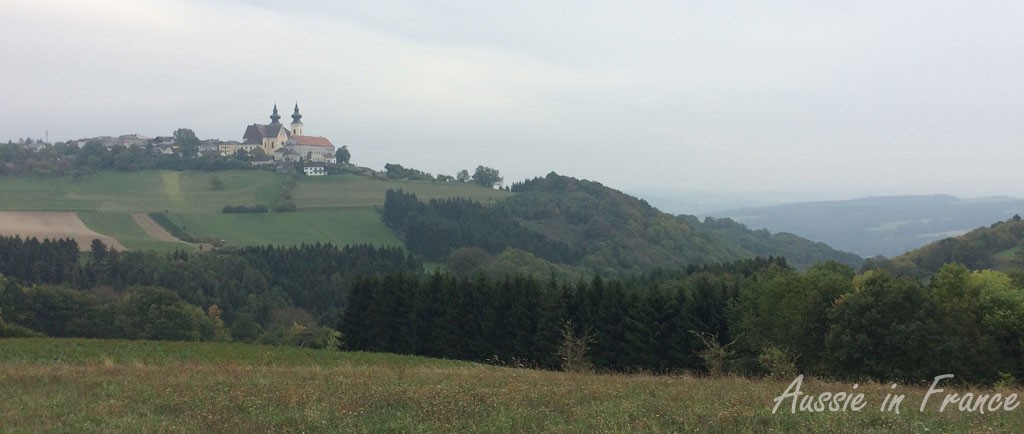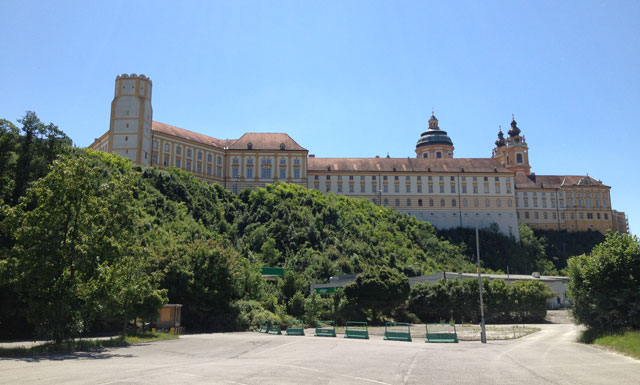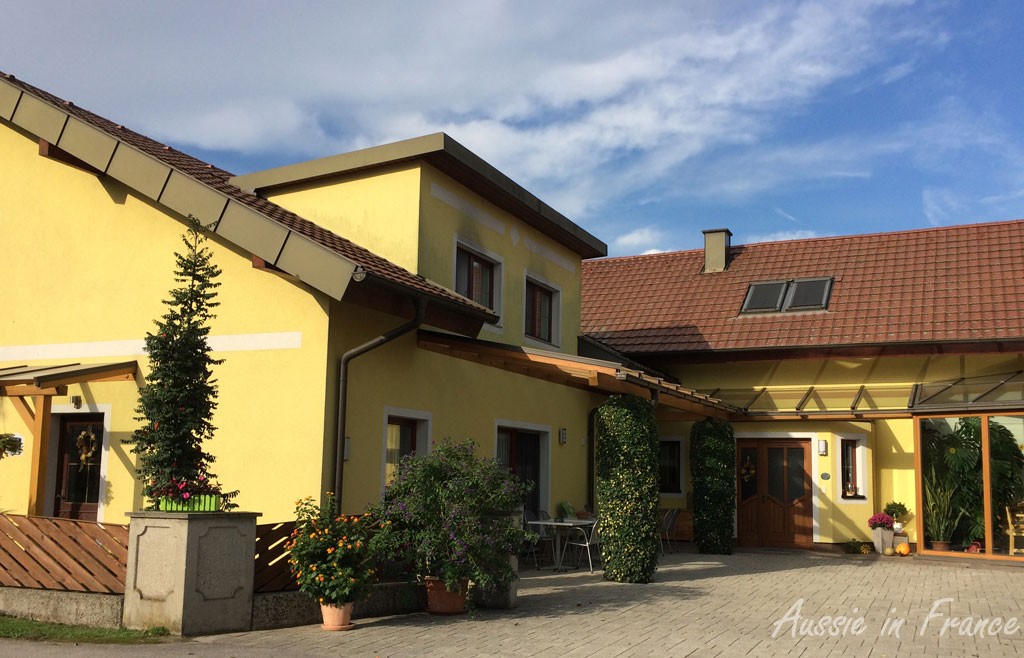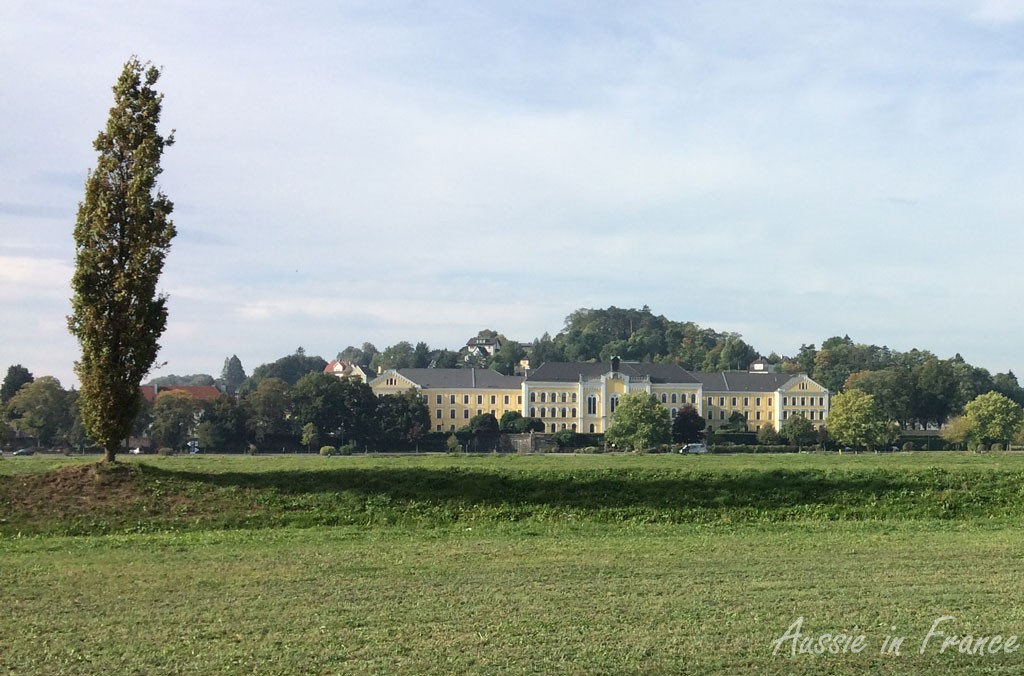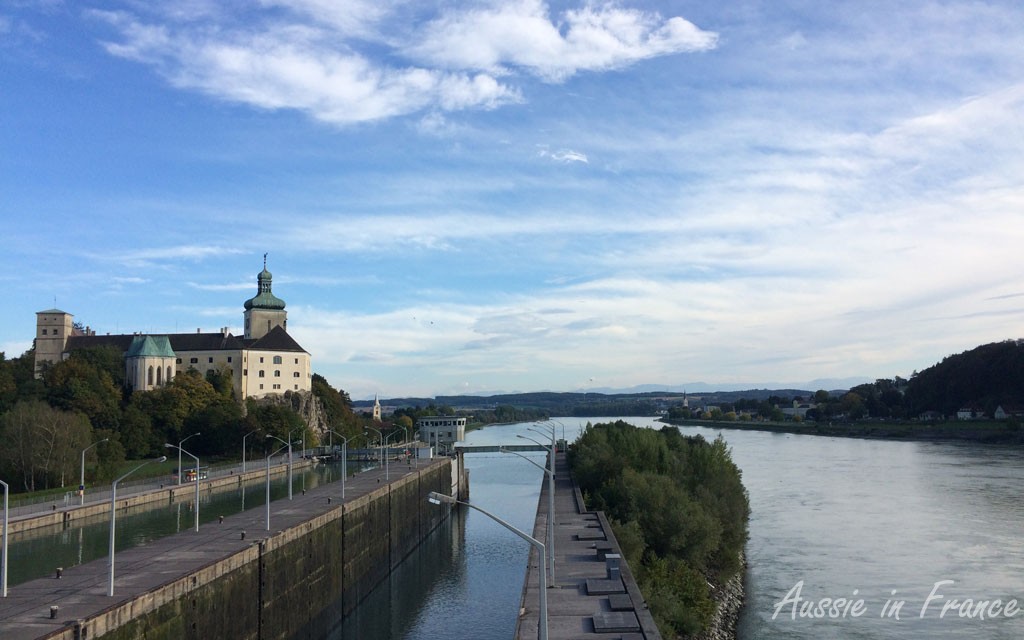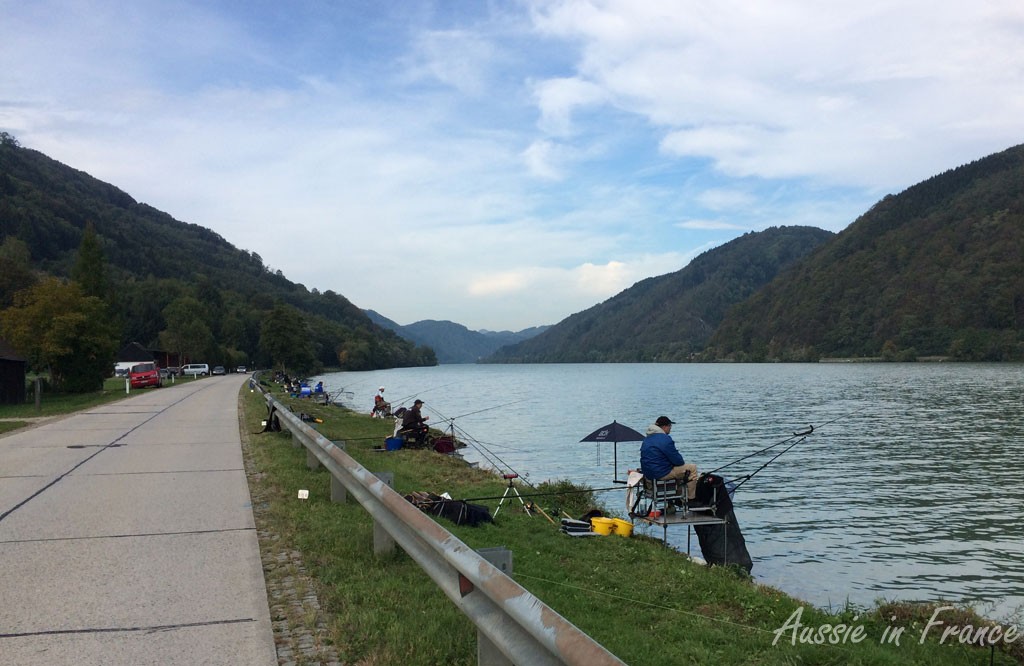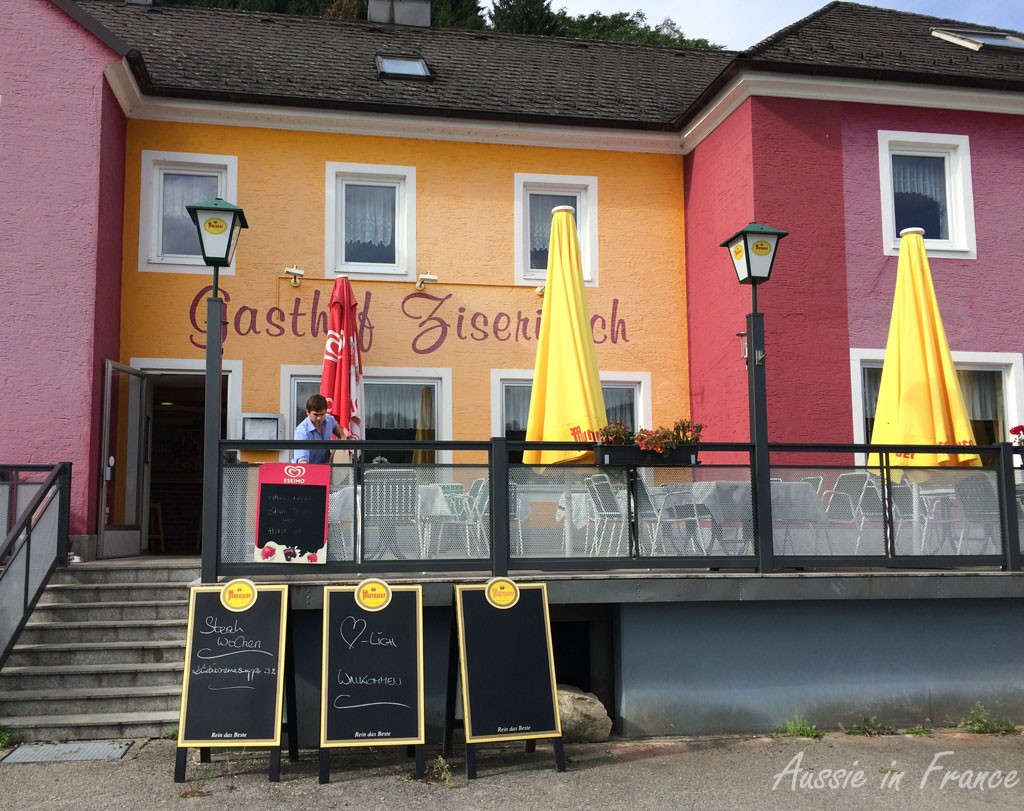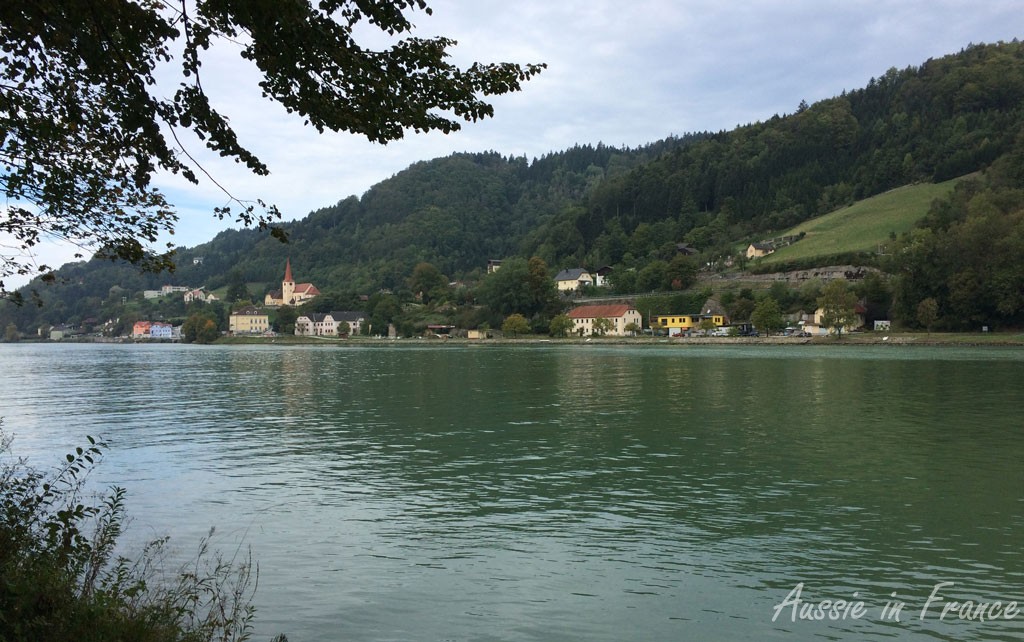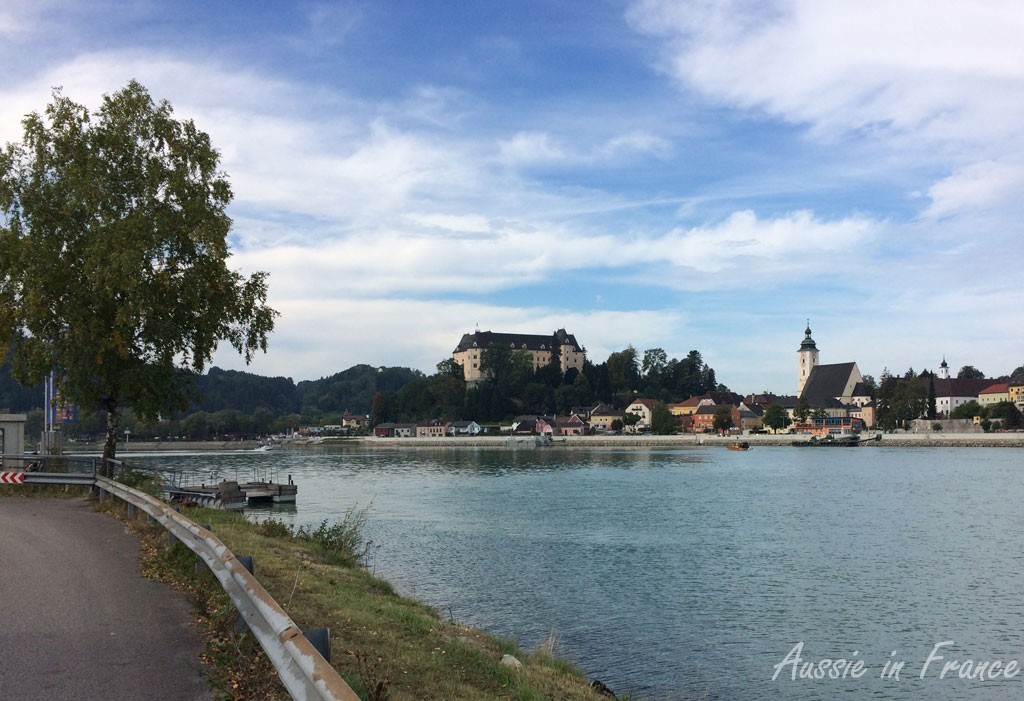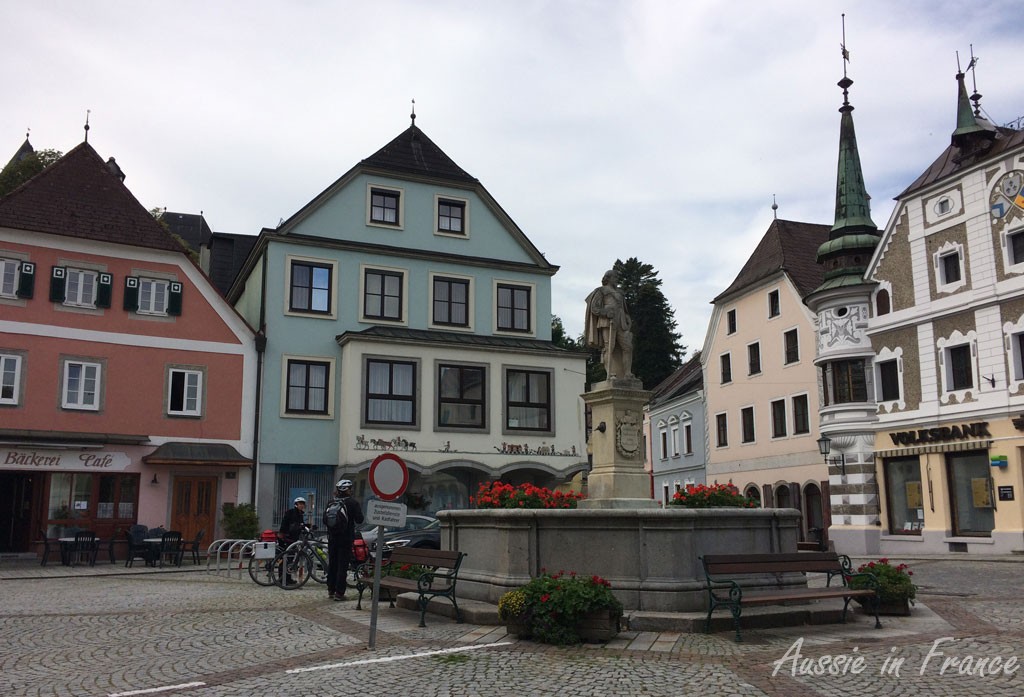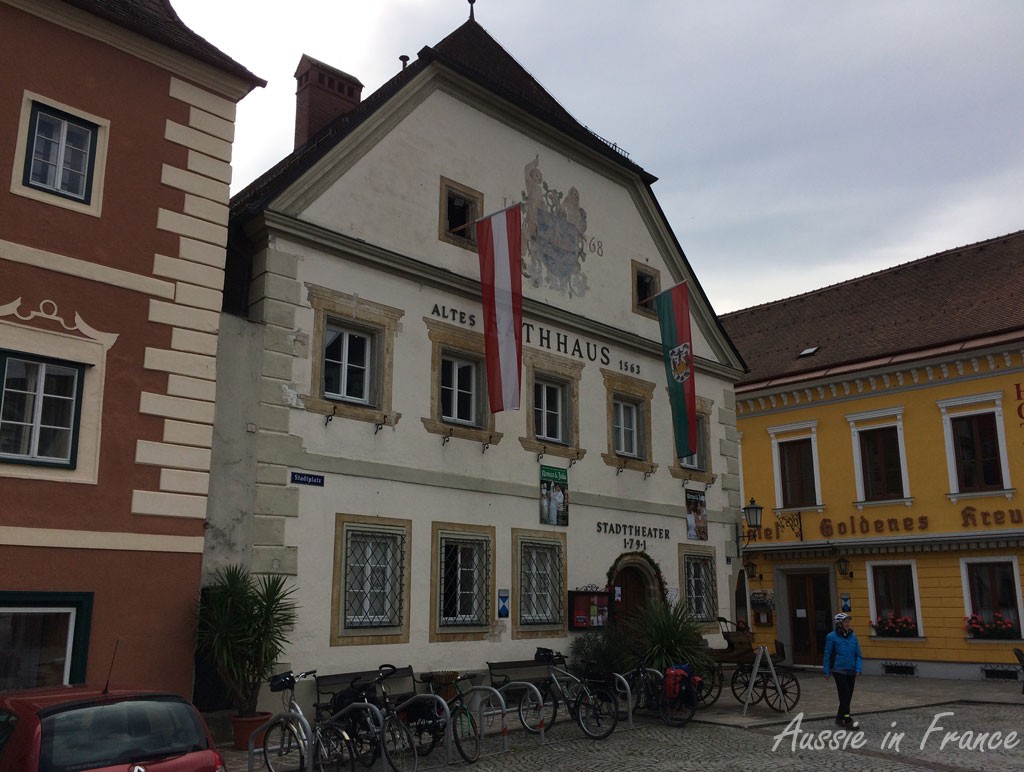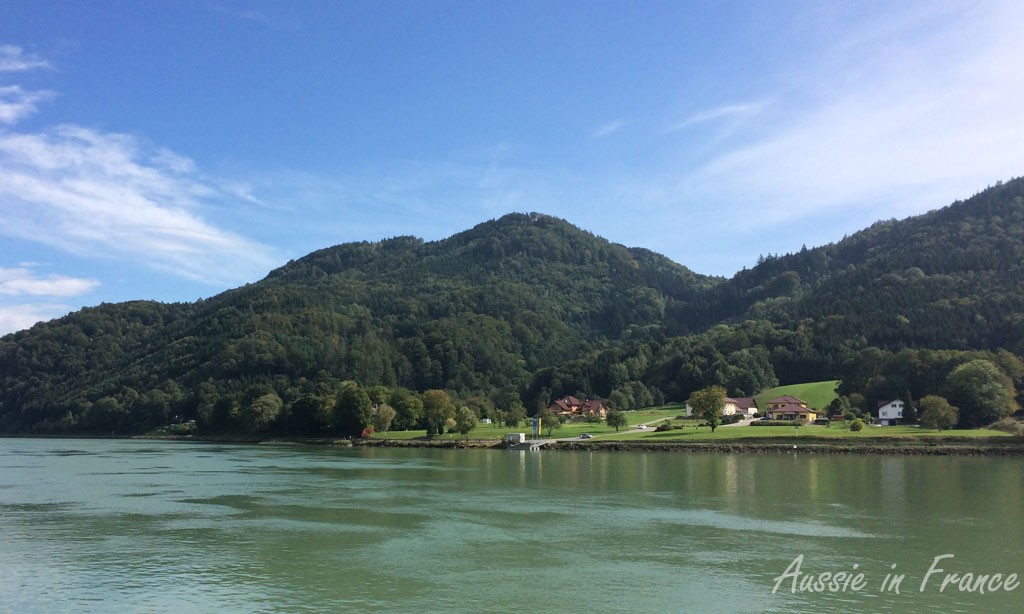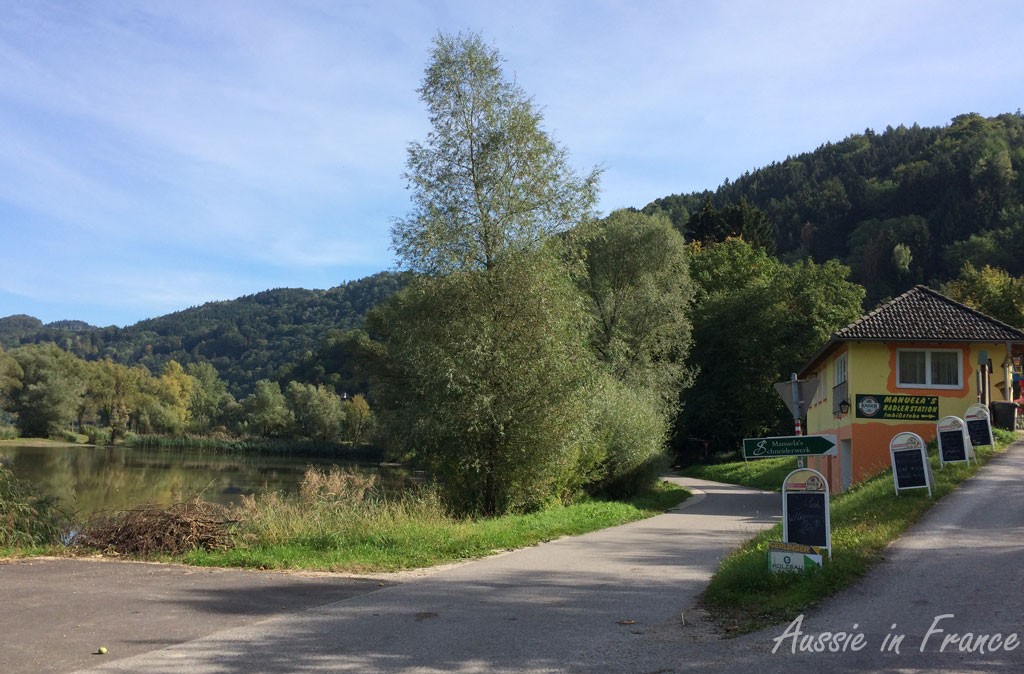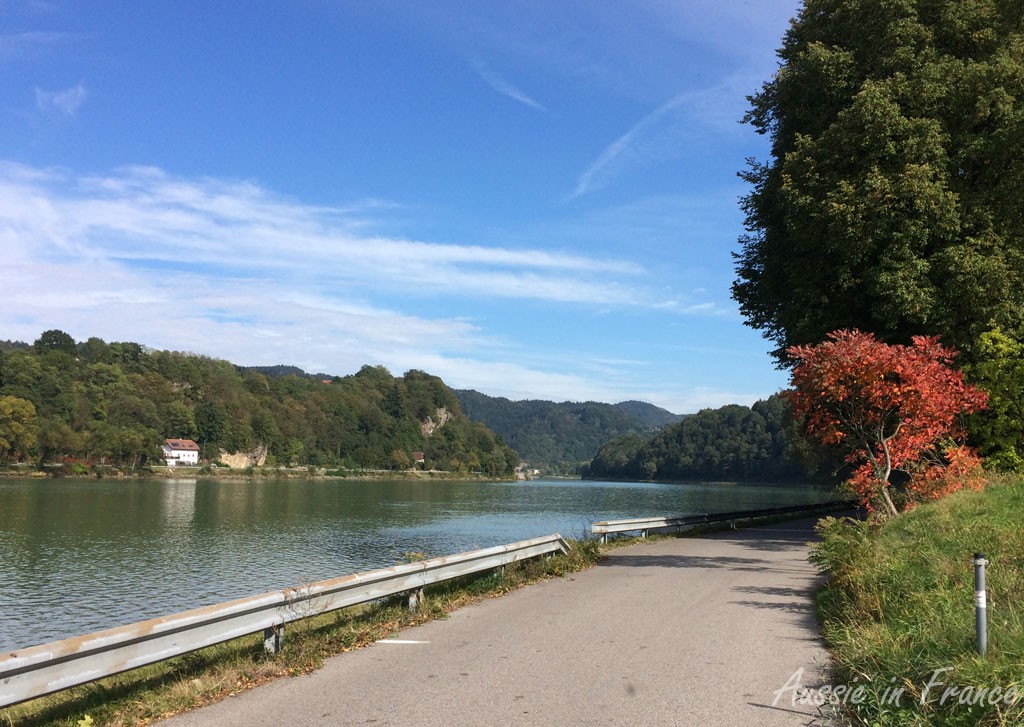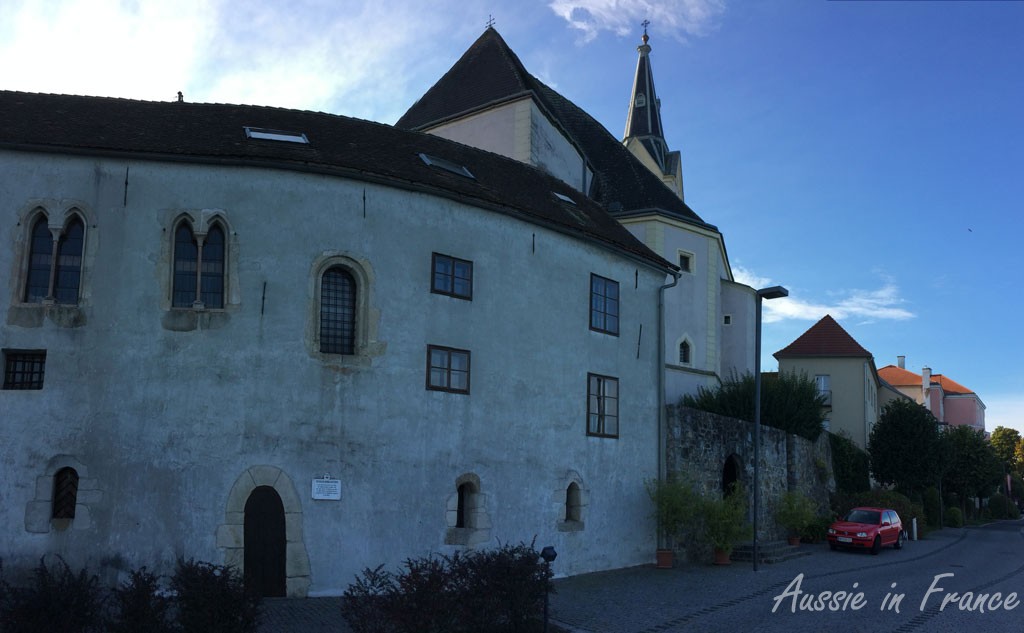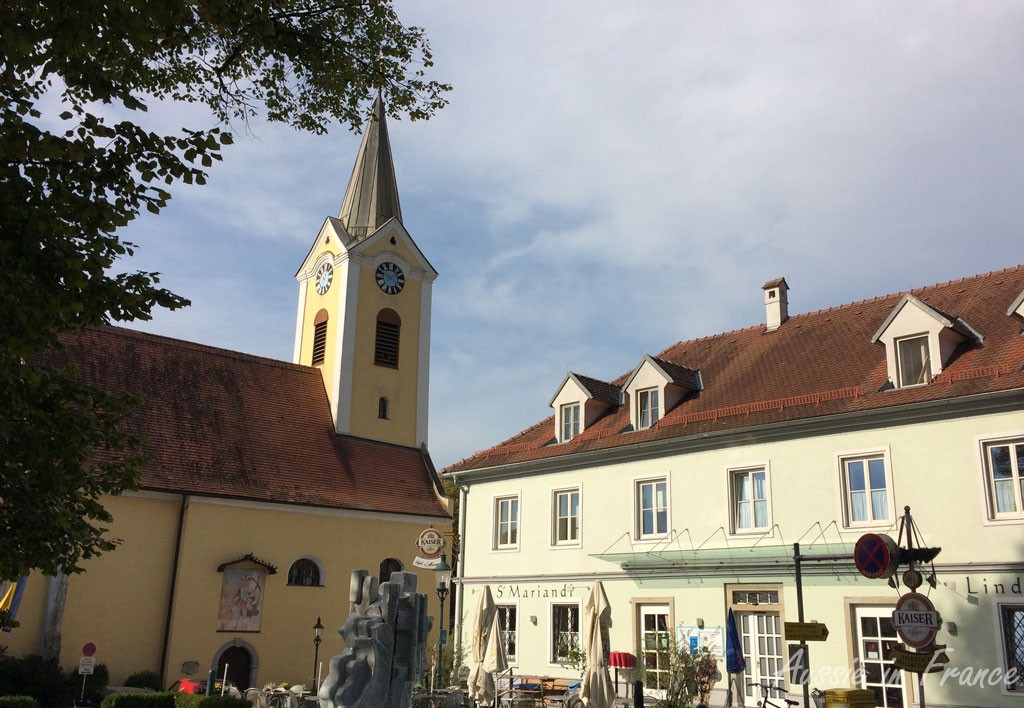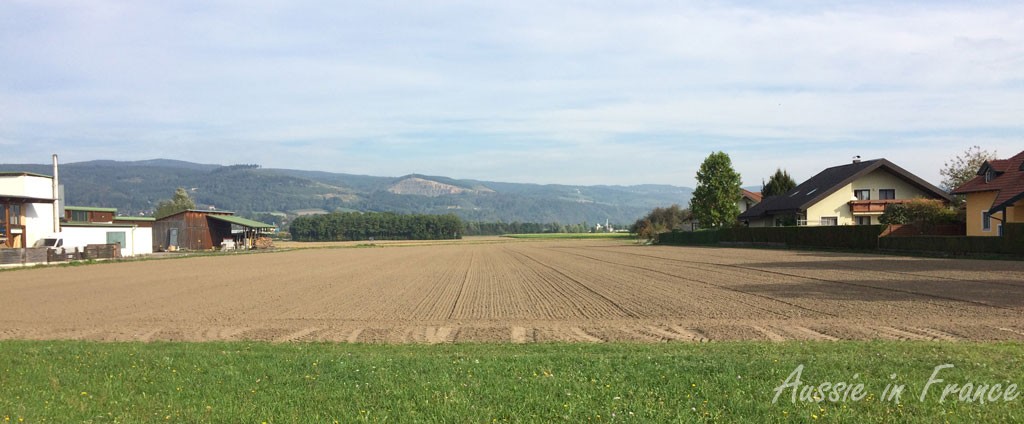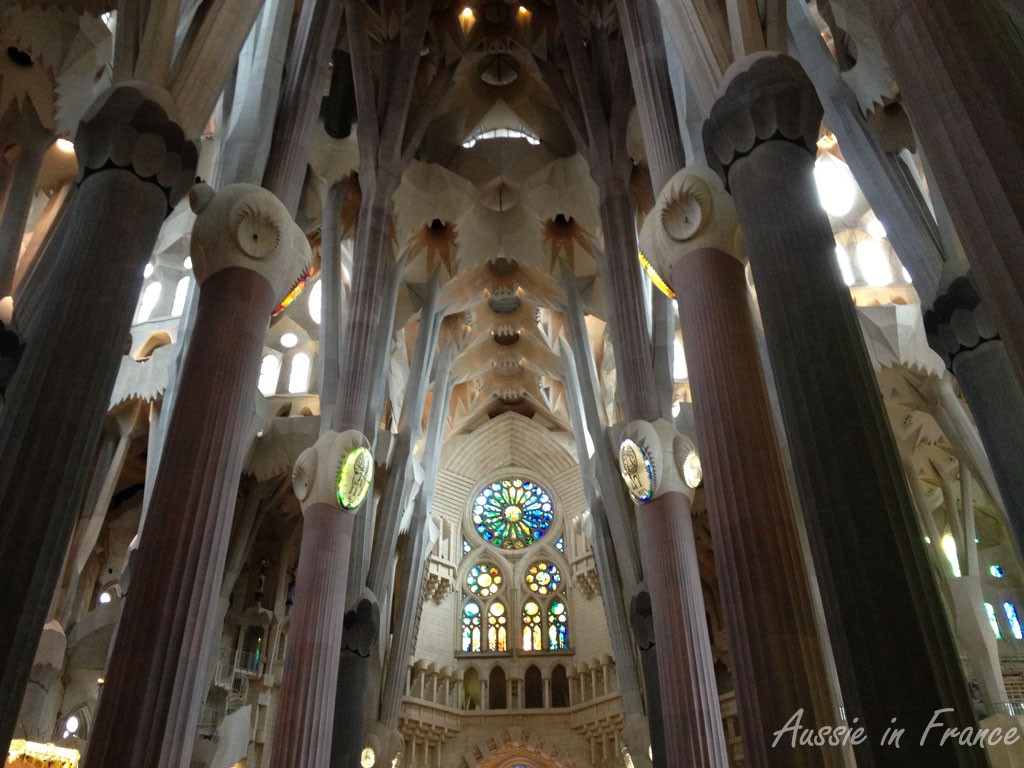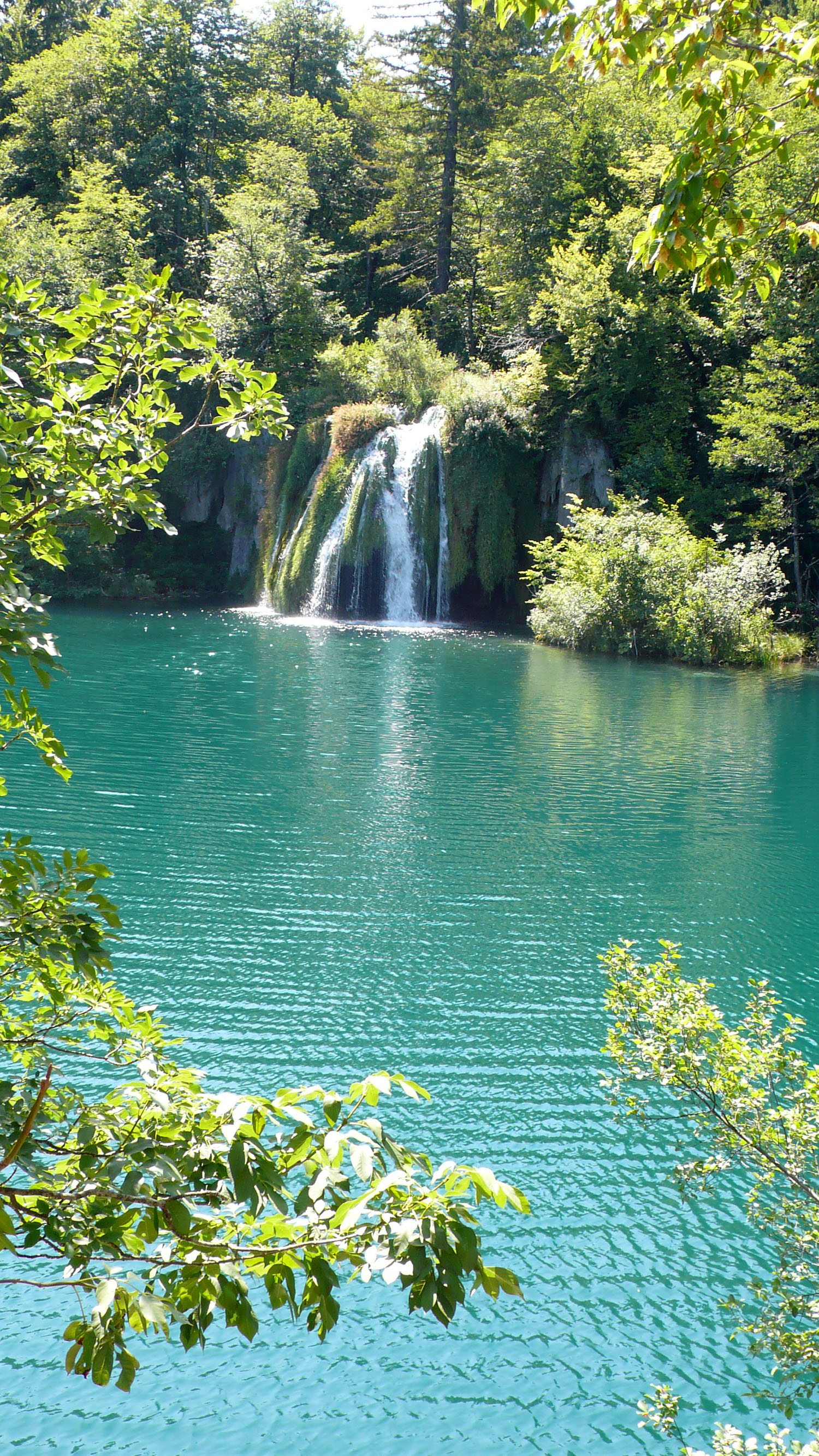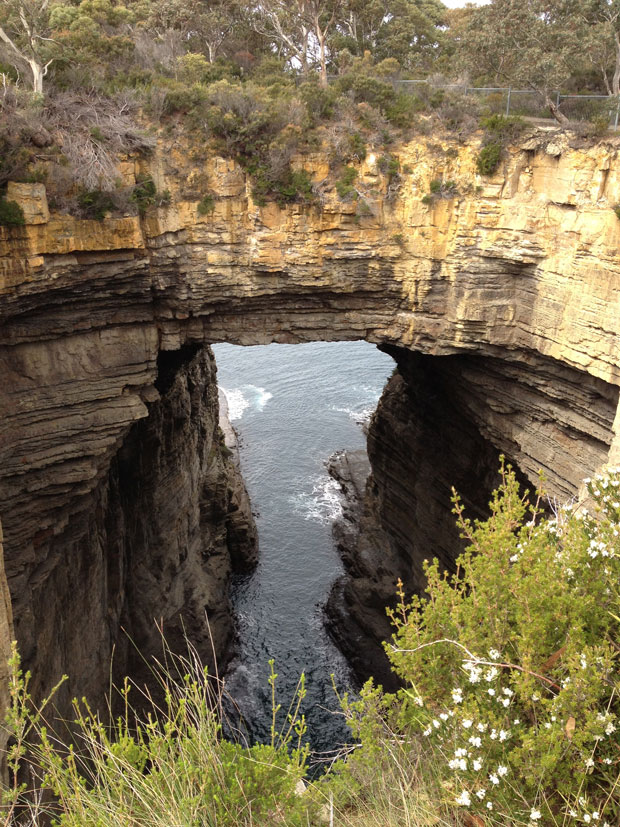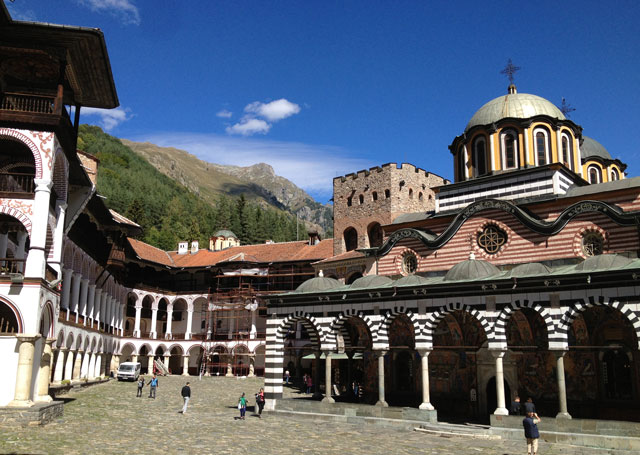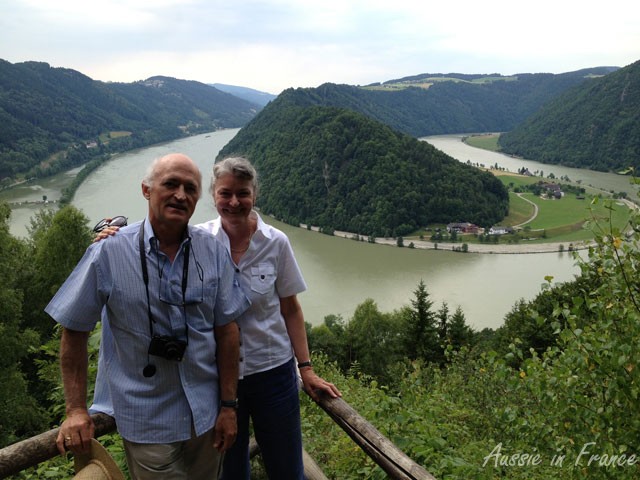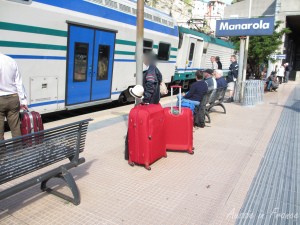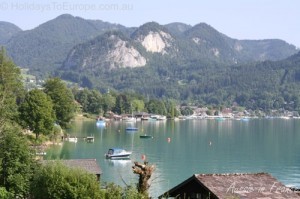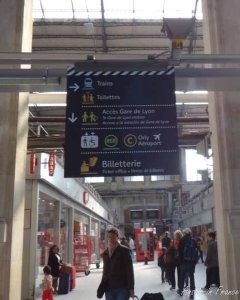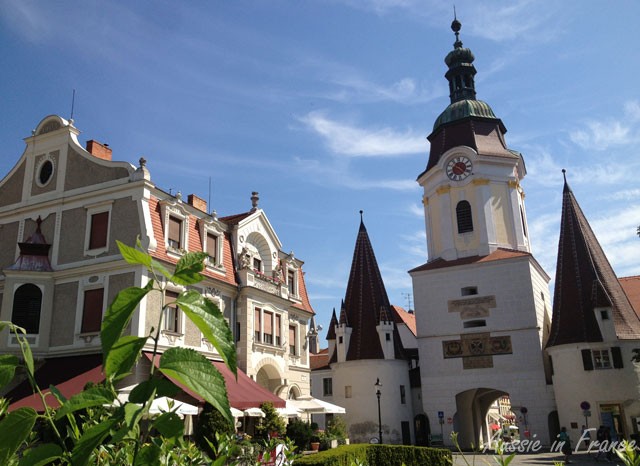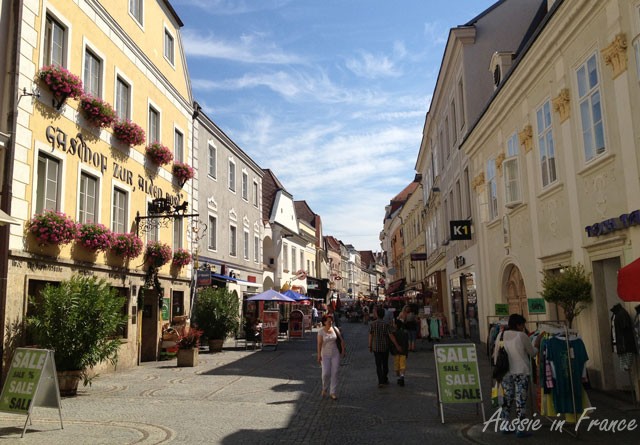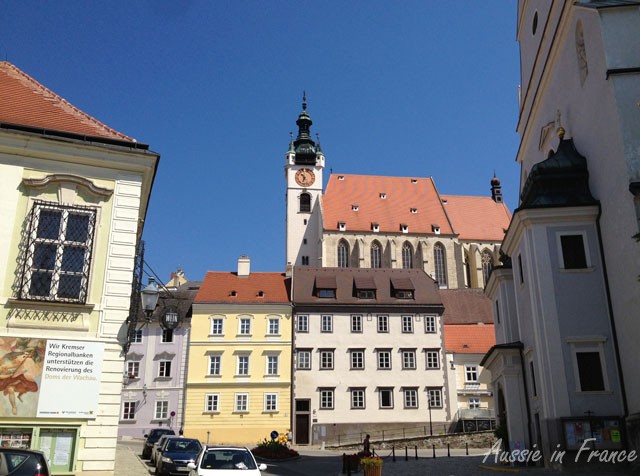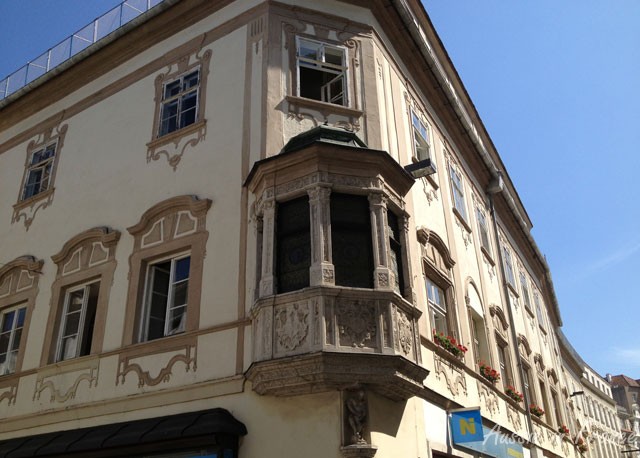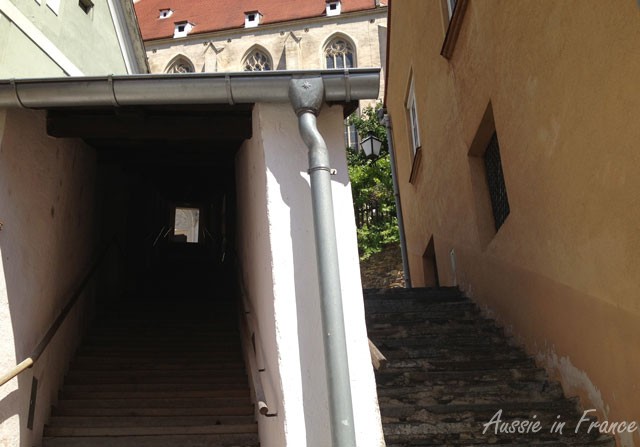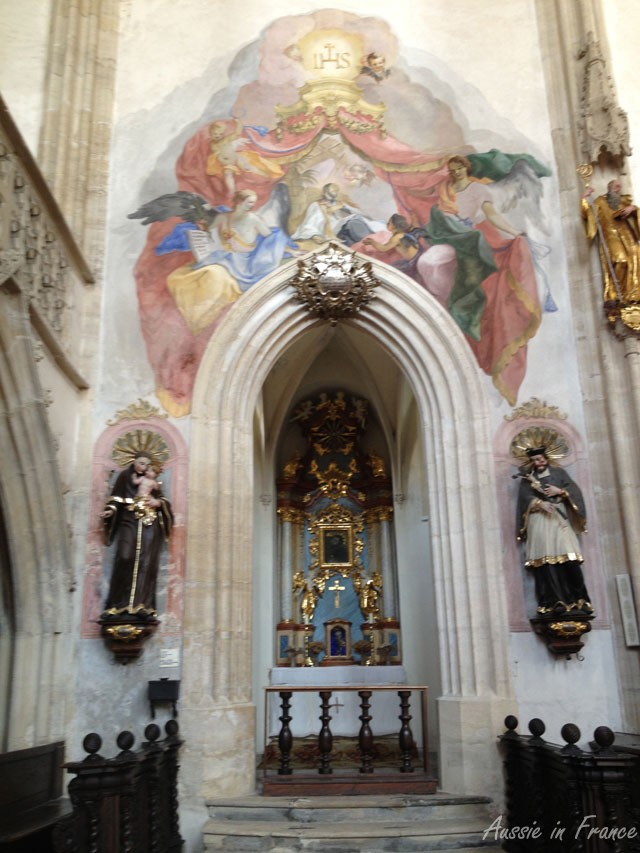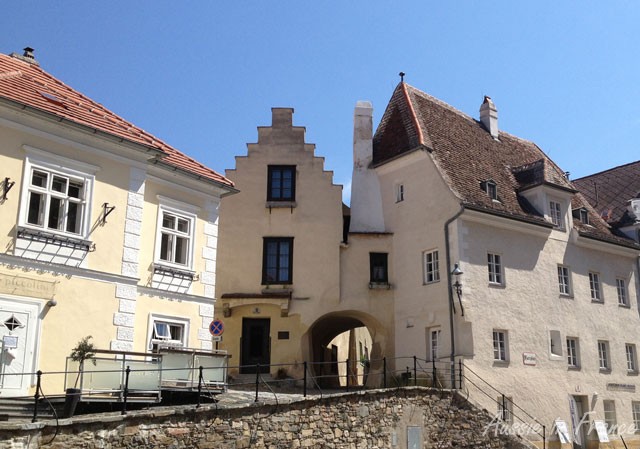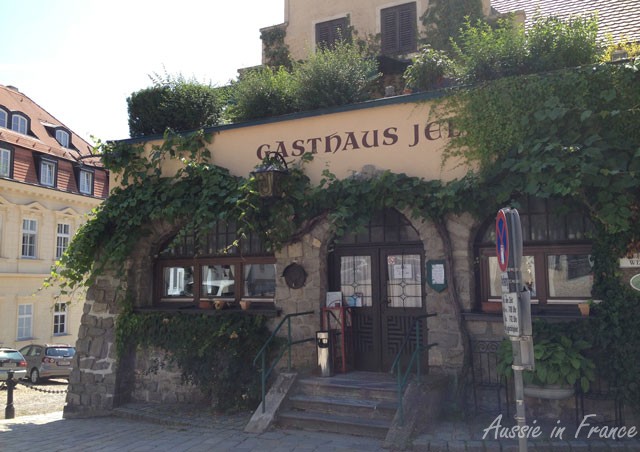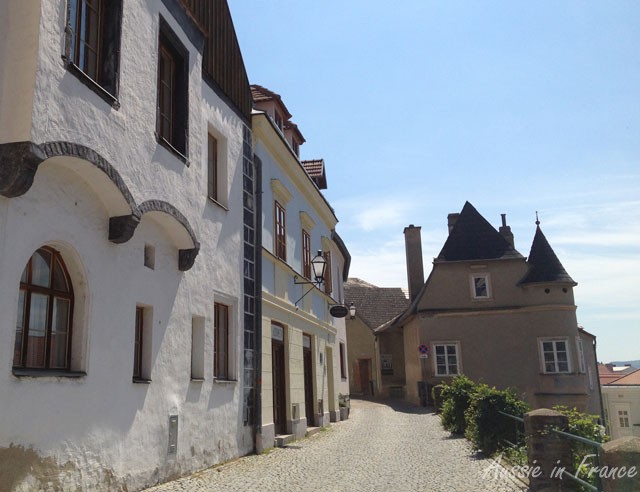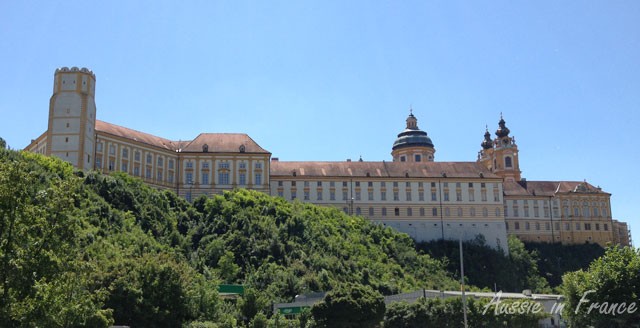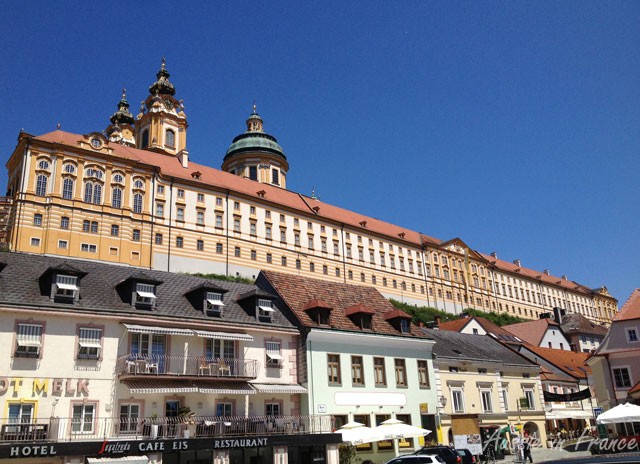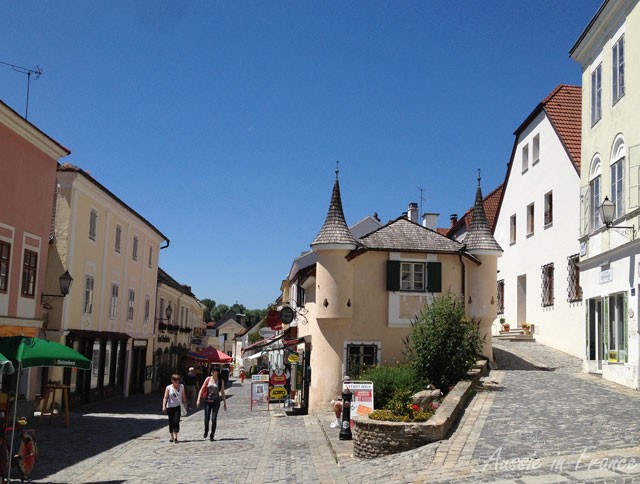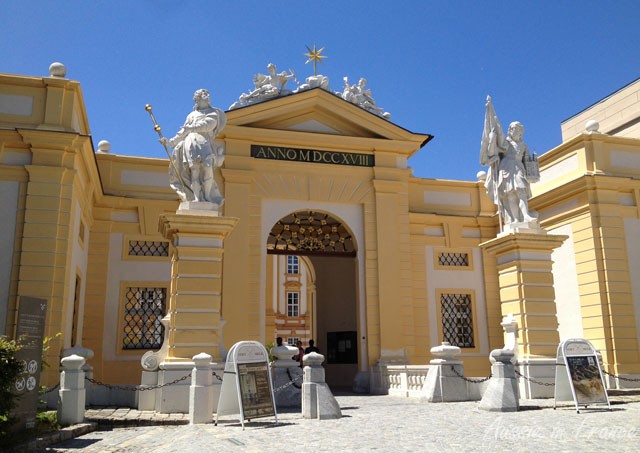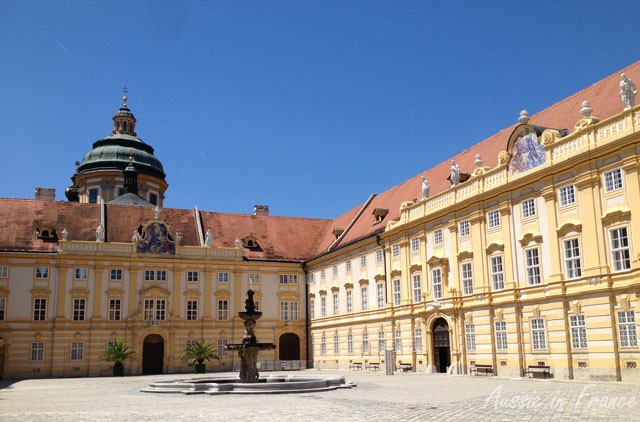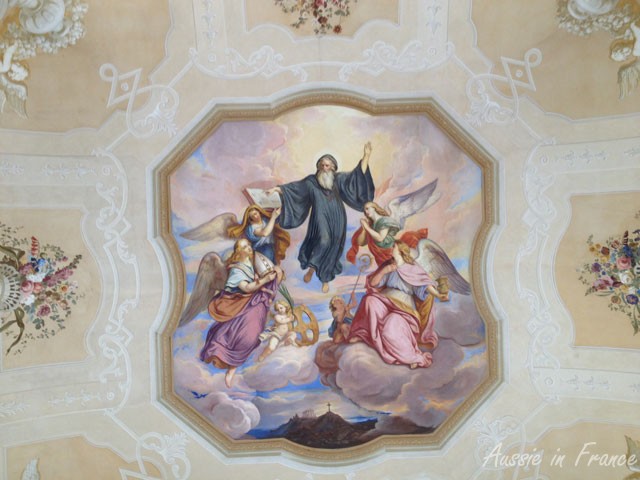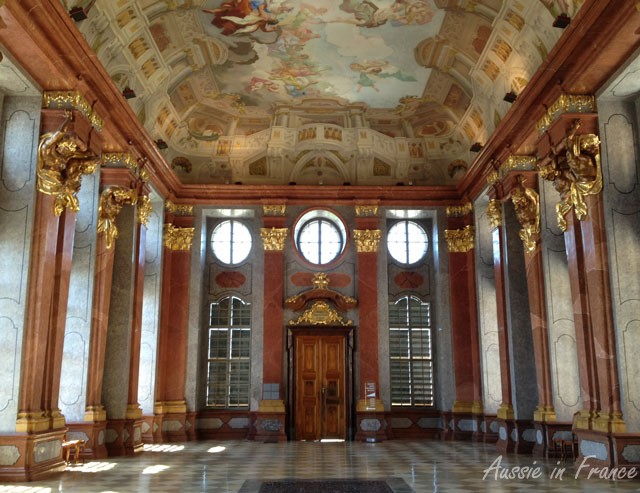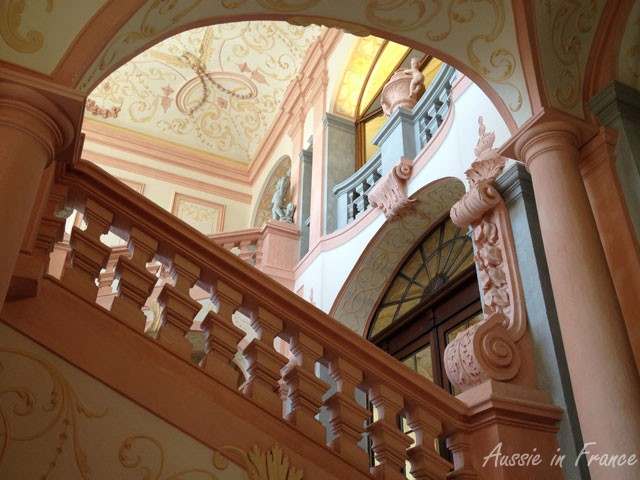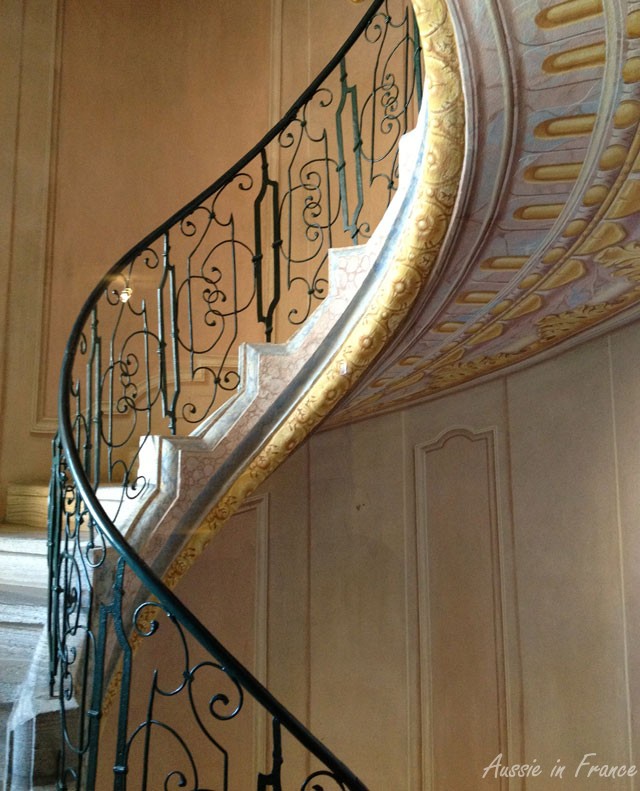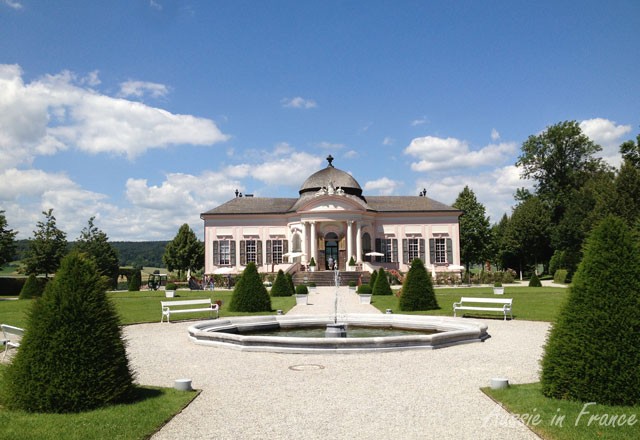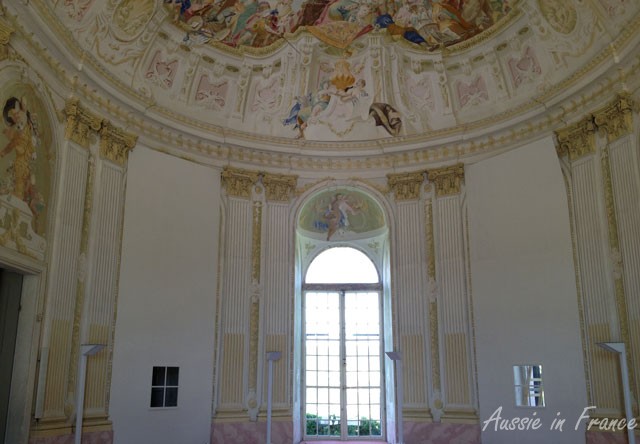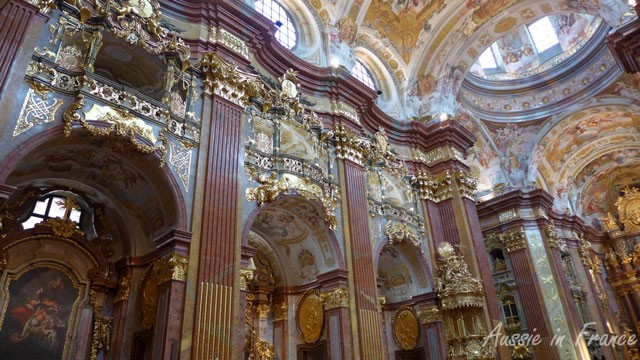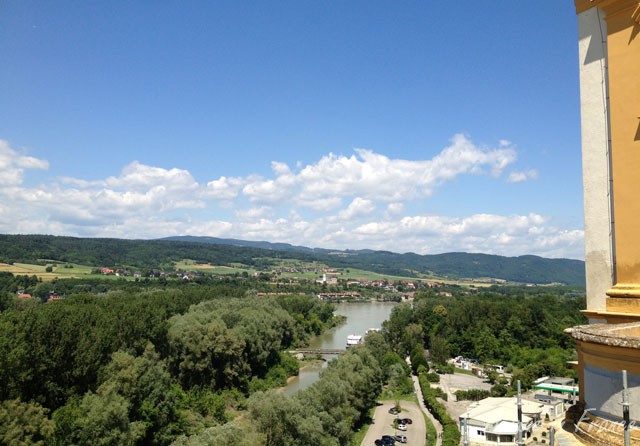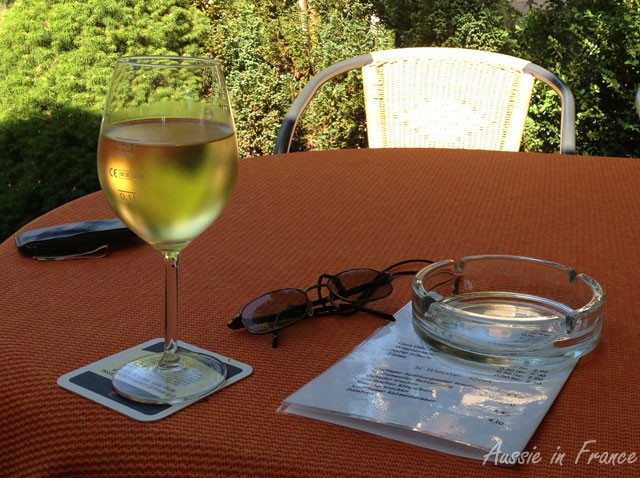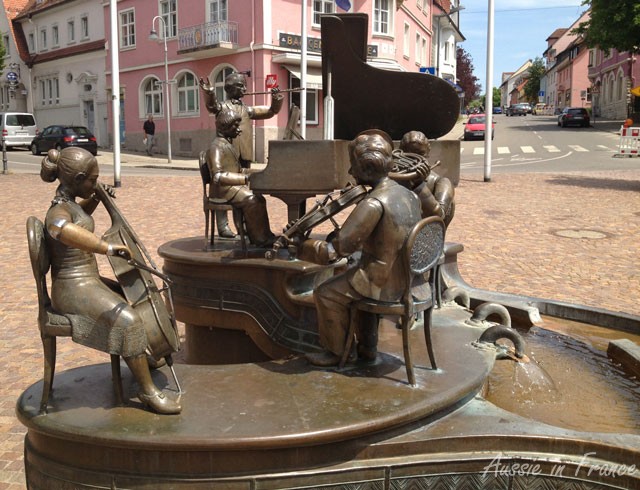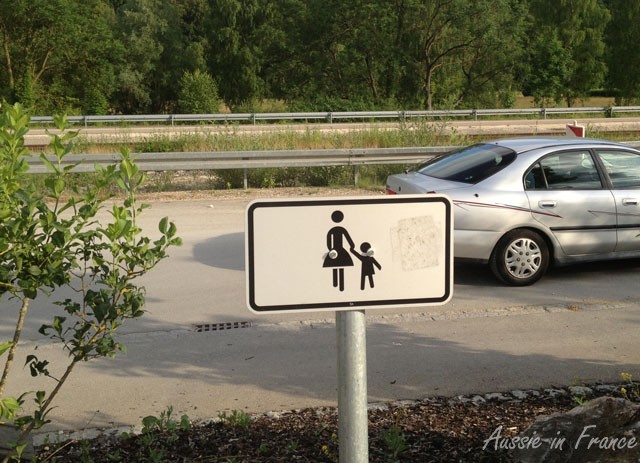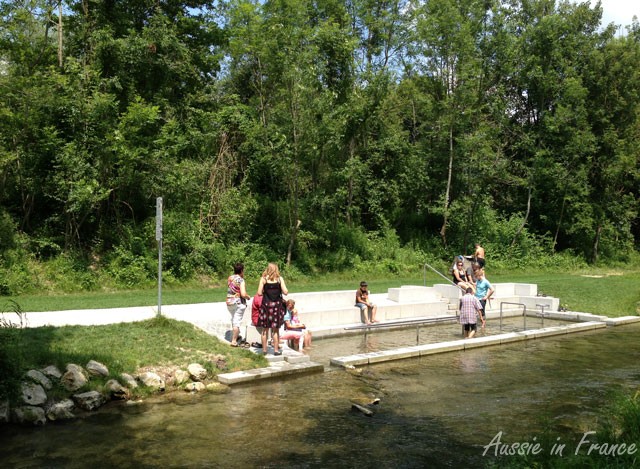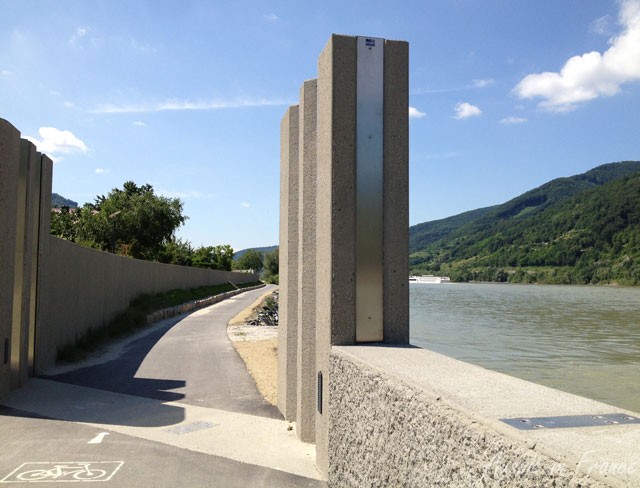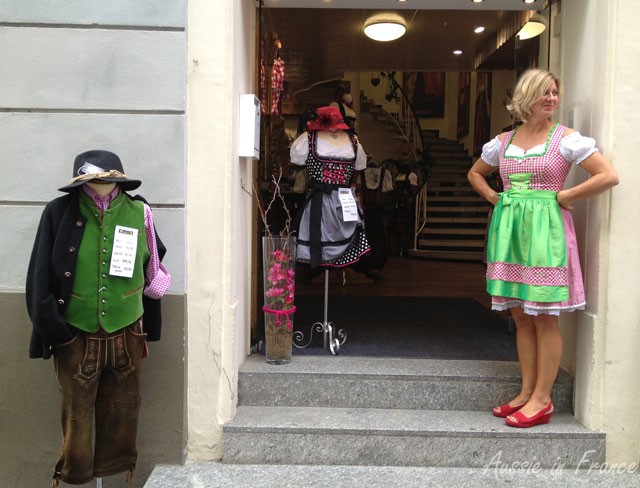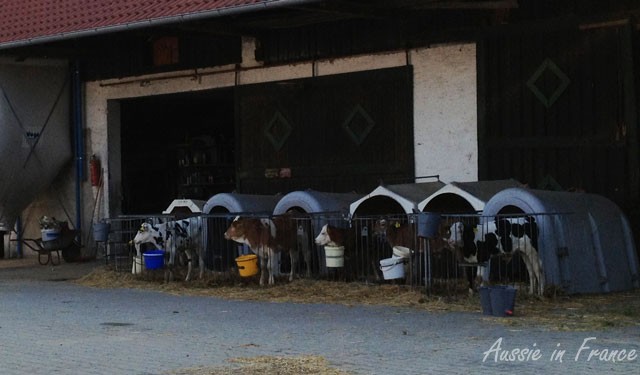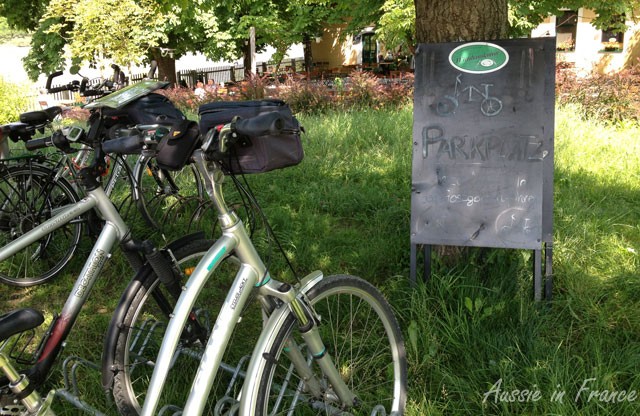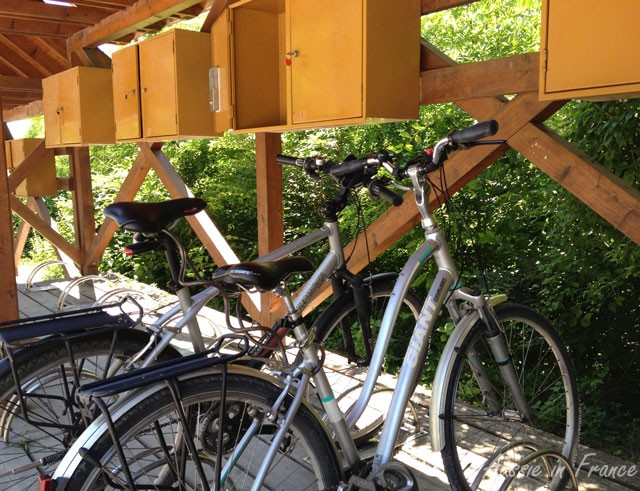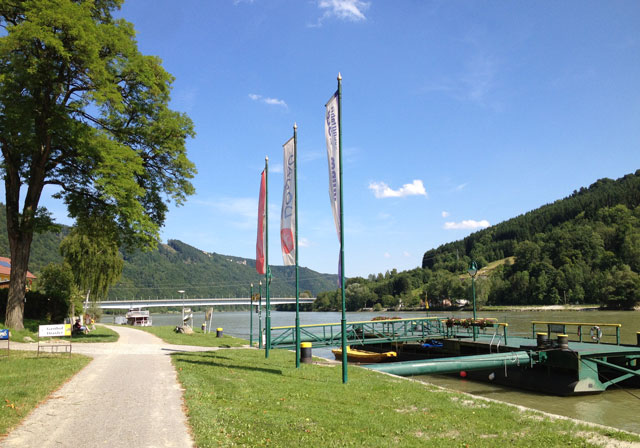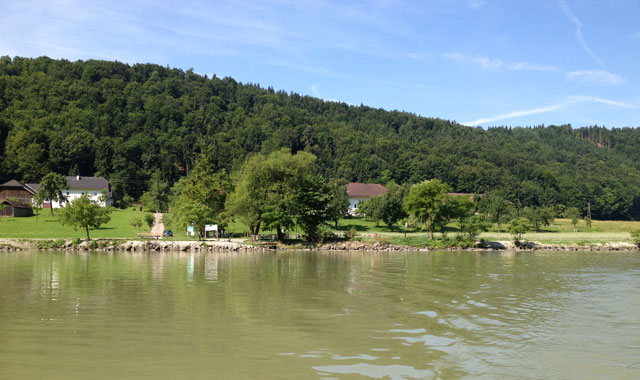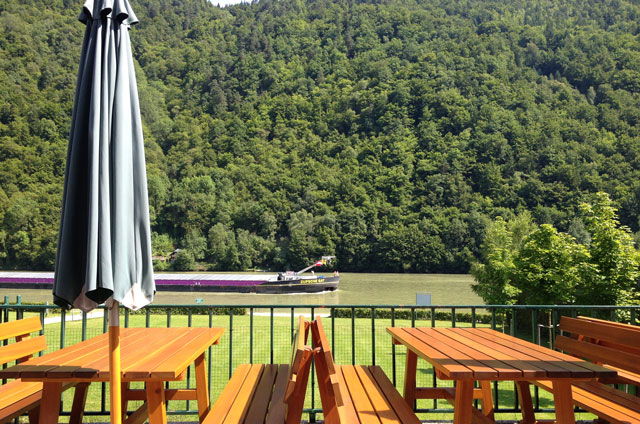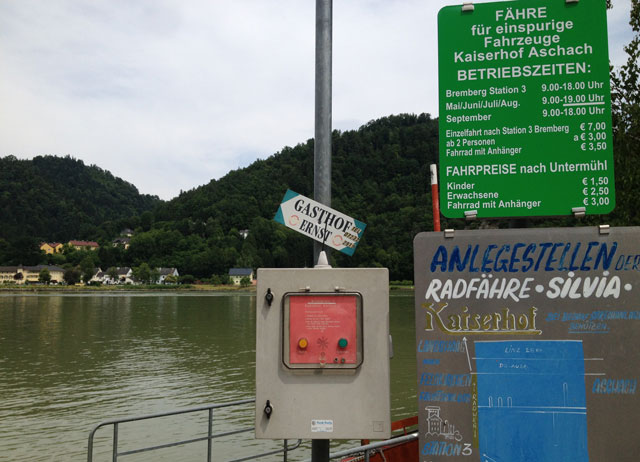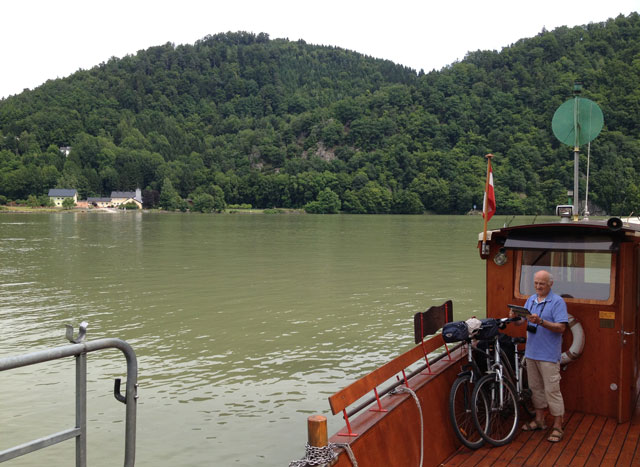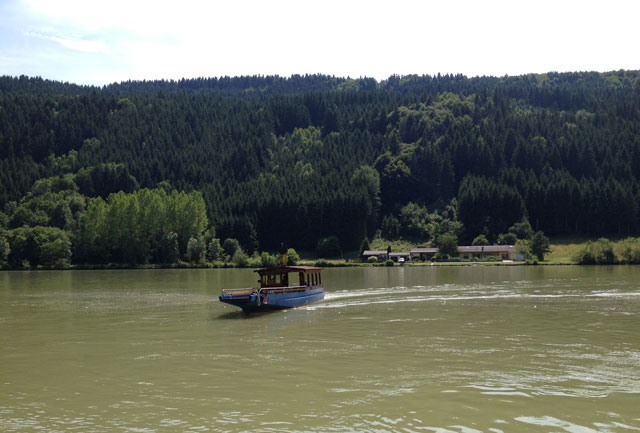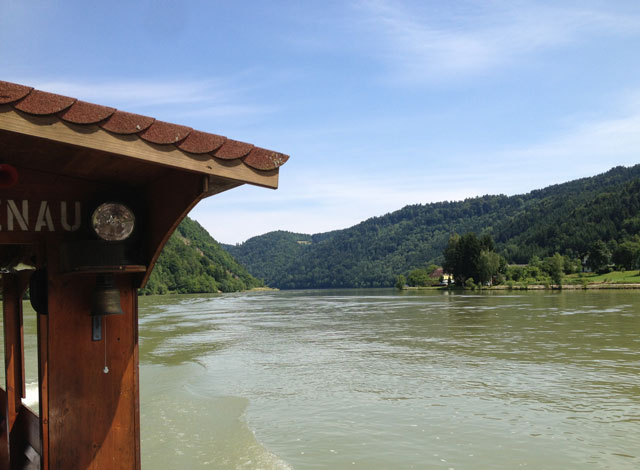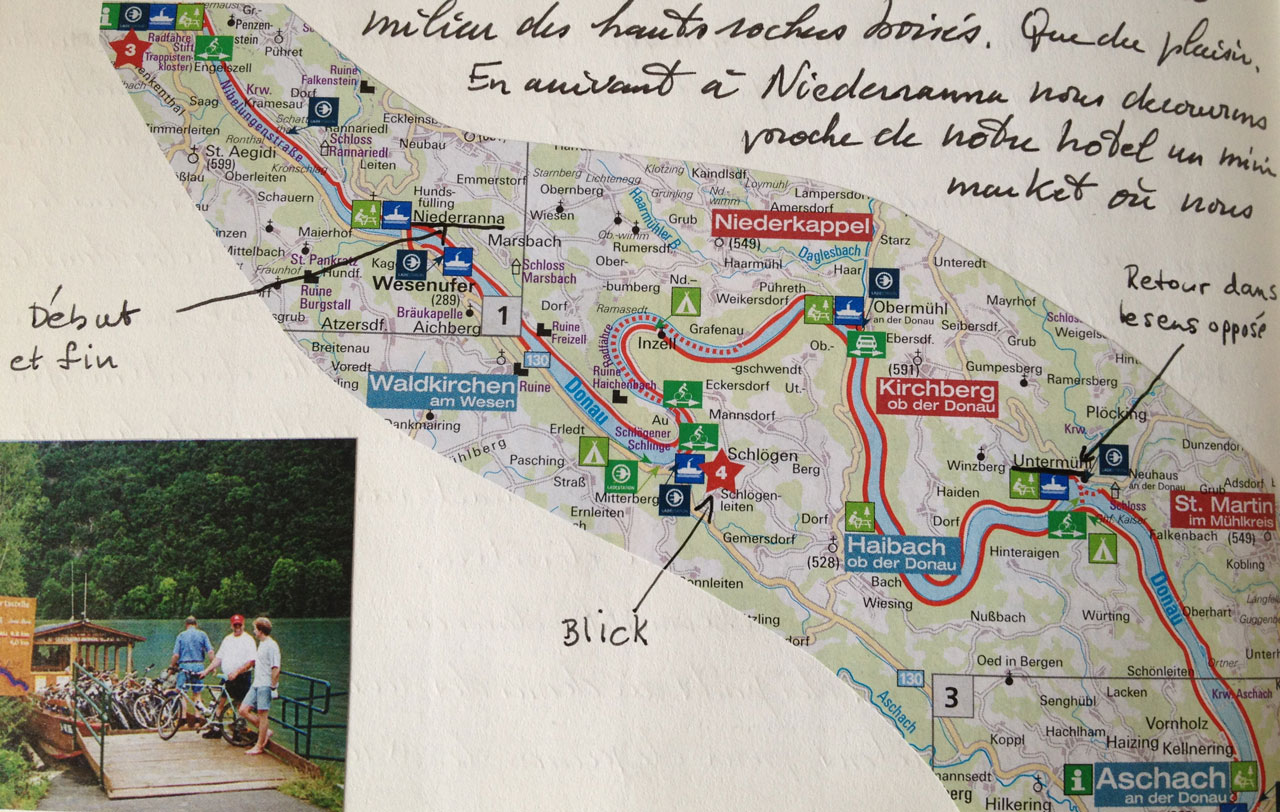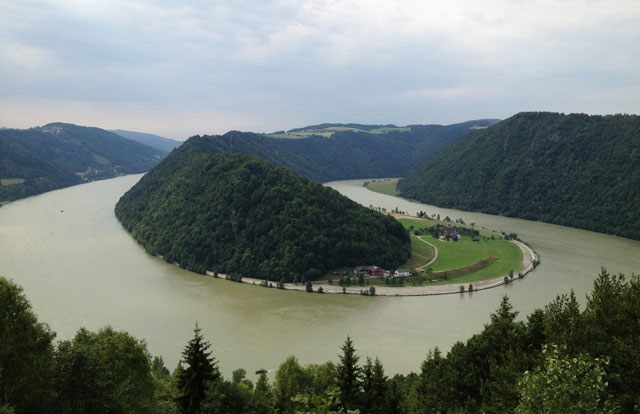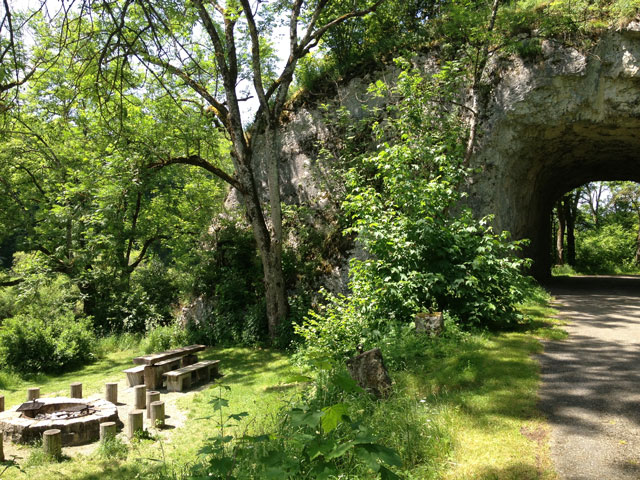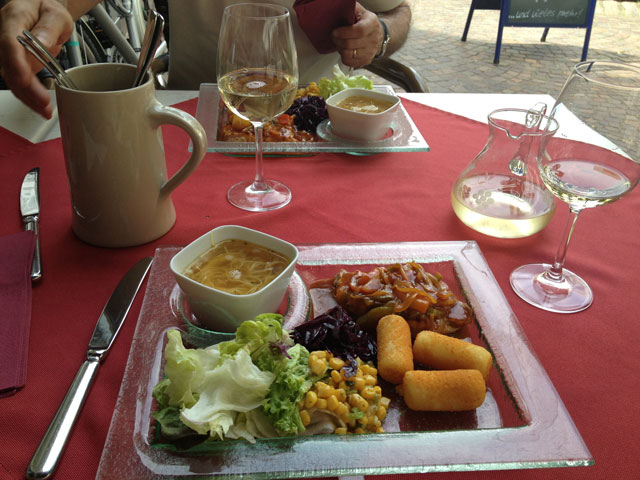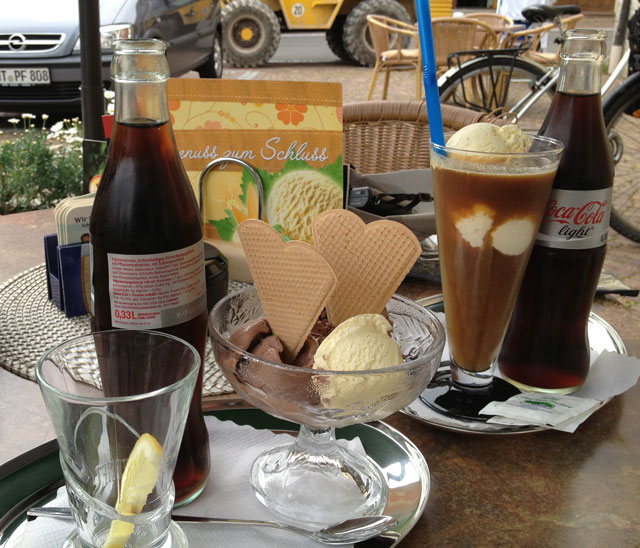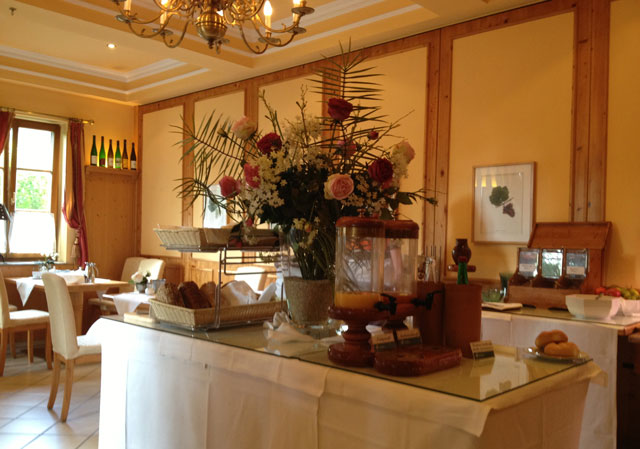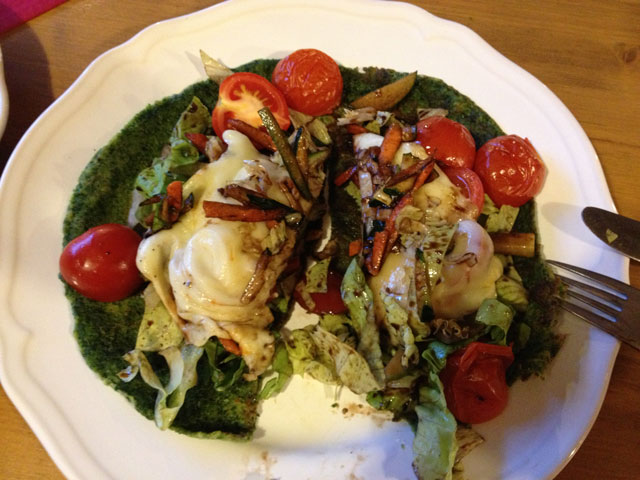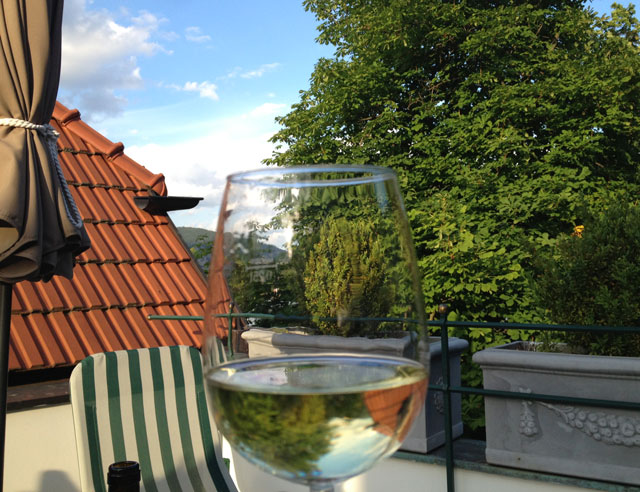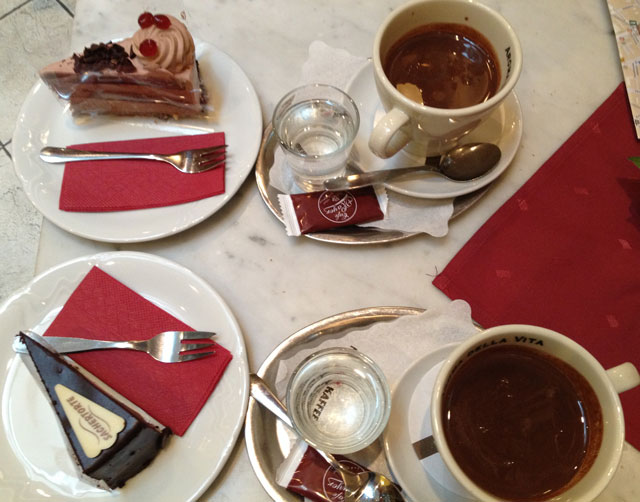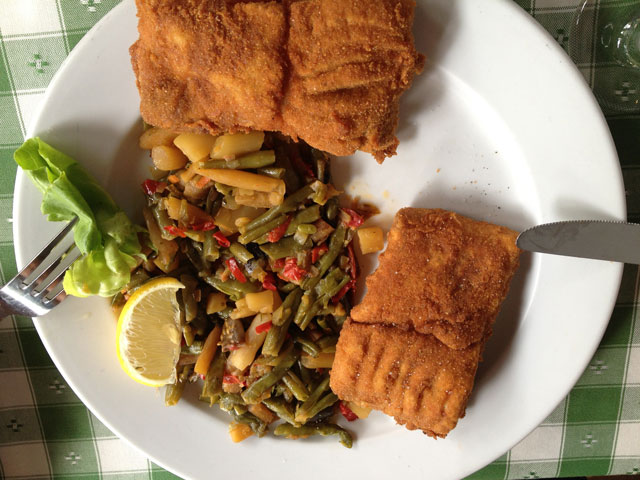After our disappointing cycling experience in the Po Valley in Italy, where we were based in Crema for two nights, ,Jean Michel suggests we go back to Wies in Bavaria. I agree but insist on getting a proper cycling map first.
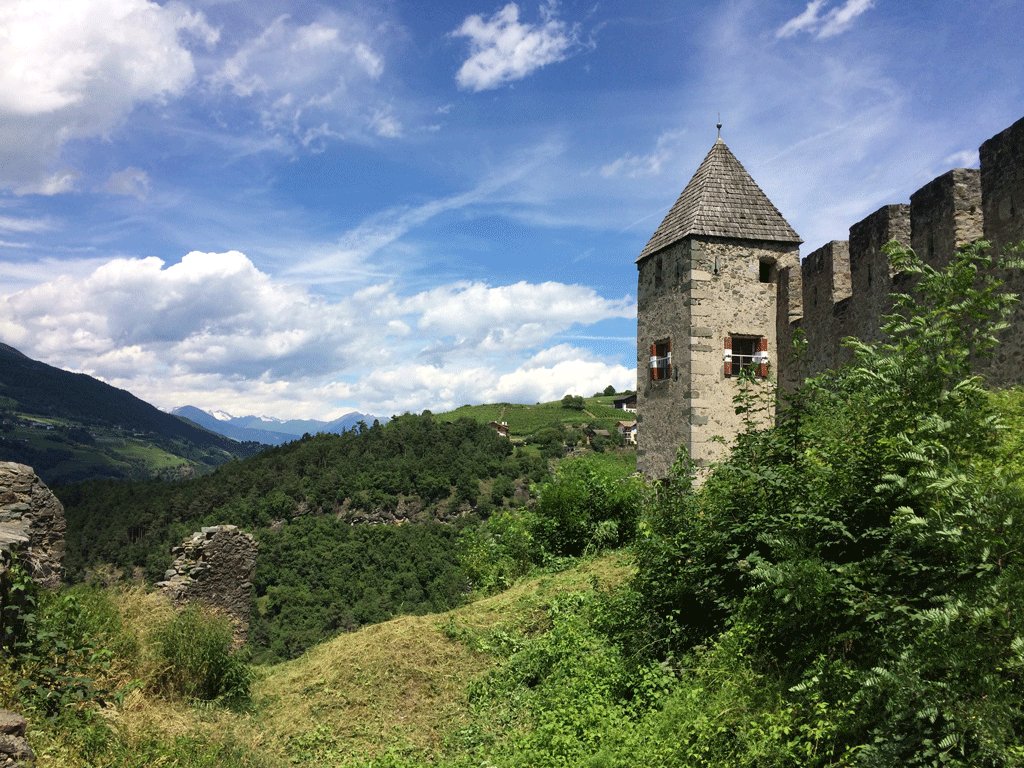
First we schedule an over-night stopover in Innsbruck in the south of Austria, with an abortive lunch stop at Bolzano which turns out to be nothing but new buildings. We leave town and get back on the motorway, then follow a sign saying Gudon. The only two restaurants in this pretty little mountain village which is more Austrian than Italian are closed but I find a bench in the shade near the church and we have a picnic. We love the beauty of the site, the panoramic view and the lovely cemetery.
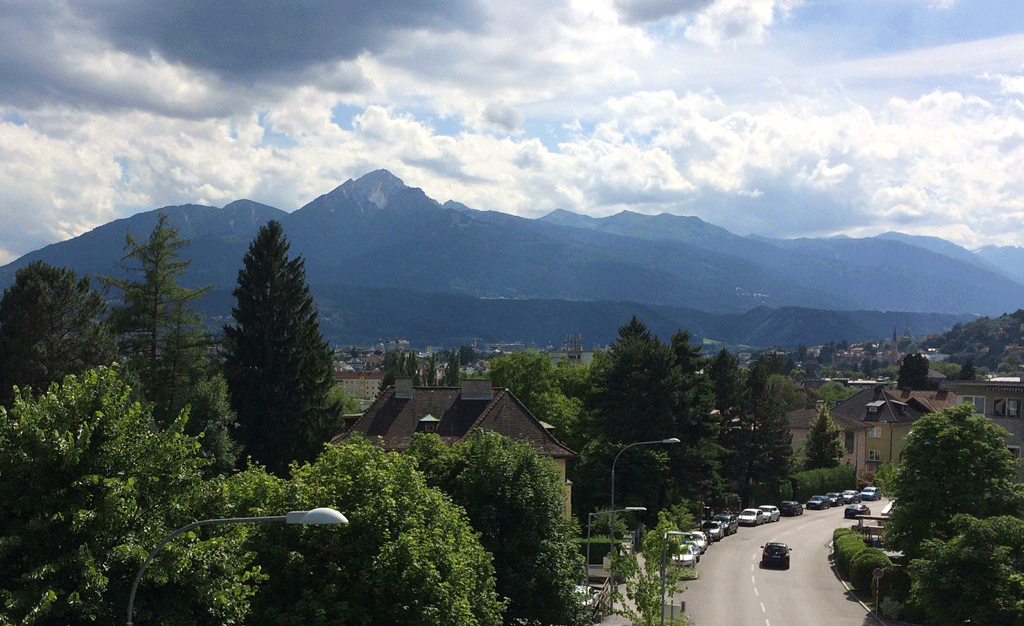
After another 1 ½ hours, we arrive in Innsbruck. going back to the same hotel we stayed in 5 years ago, Gastof Koreth. It’s been renovated, the rooms seem to have shrunk, the balcony still has the same great view of Innsbruck and the surrounding mountains, the wooden floor creaks badly and breakfast is hardly any better than in Italy.
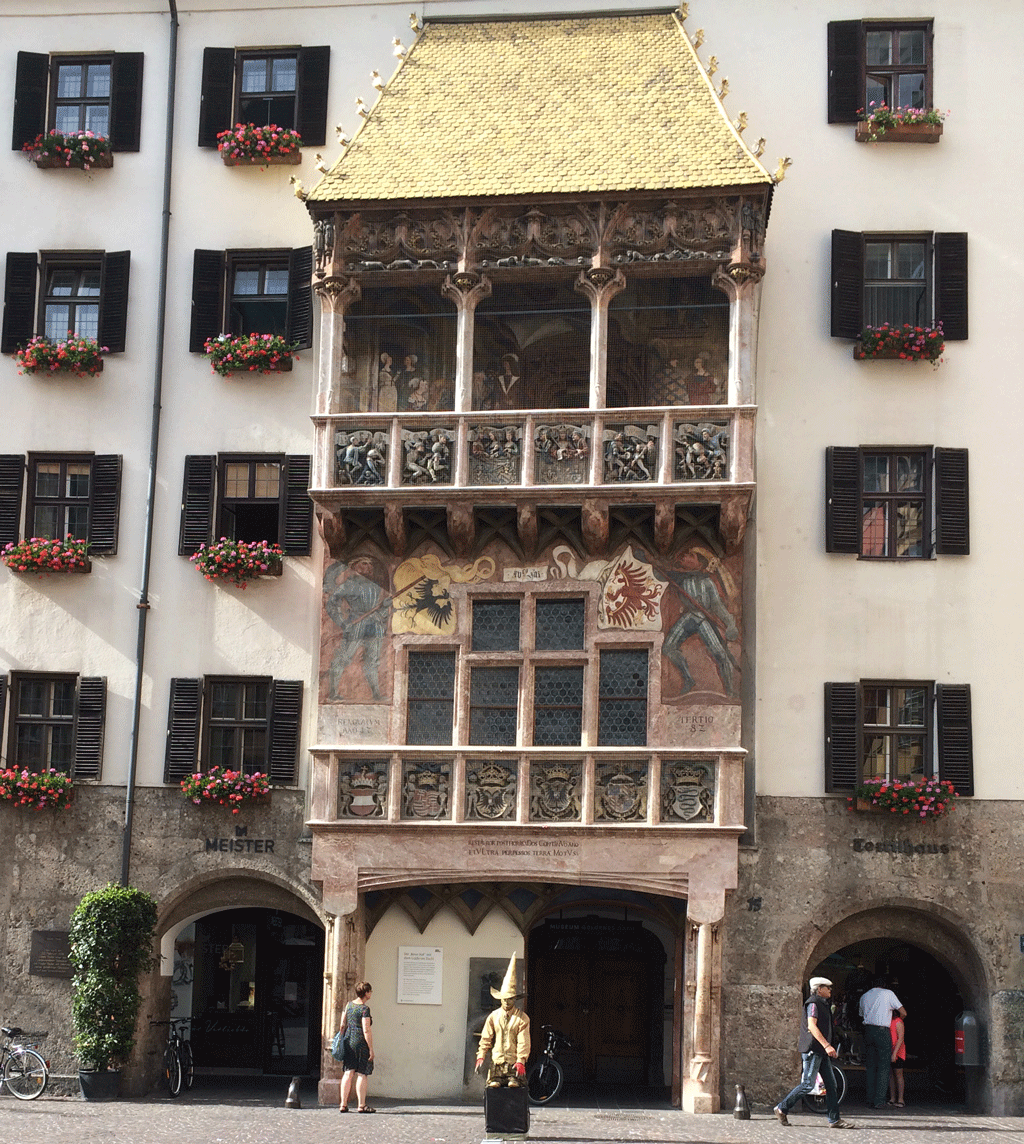
After a short rest, we ride into the Old Town to see the Golden Roof again but there are so many tourists that we decide to cycle along the river for a few kilometers. This is the sort of holiday we like! We have our aperitif at the same café, Dom Café, as last time opposite the Cathedral and dinner in the same beer garden, Löwen Haus, as we did five years ago. We are creatures of habit if nothing else. Actually, it’s easier than searching for new places! The dinner’s a bit disappointing though – we should have taken the day’s special.
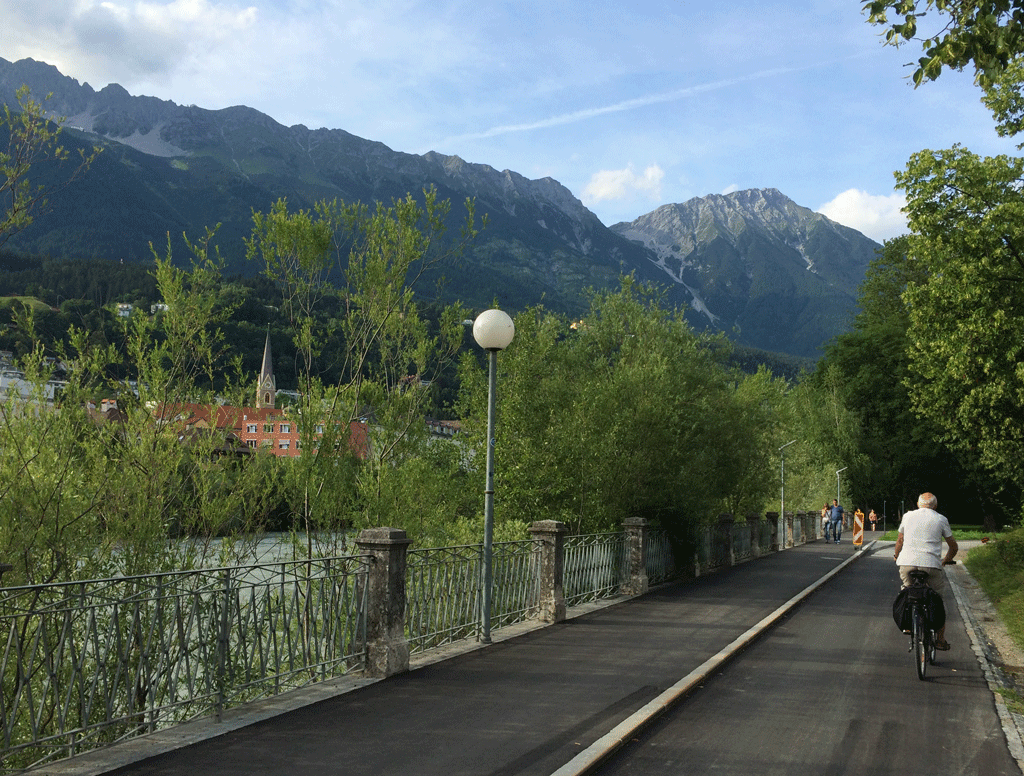
After cycling back up the hill to our hotel, we start the next accommodation search on booking.com. This is not a task that either of us likes. We have a lot of difficulty finding anything as we’d like an apartment for a few days and nothing seems to be available even on German websites which have the added complication of being in German. We settle for the Alpen Hotel in Peiting, about 30 km north of Fussen, for two nights. We are tempted by Sonnenbichl where we stayed in 1999, but would like a little more comfort. I suggest we stop off at Garmich-Partenkirche on the way and pick up some tourist information.
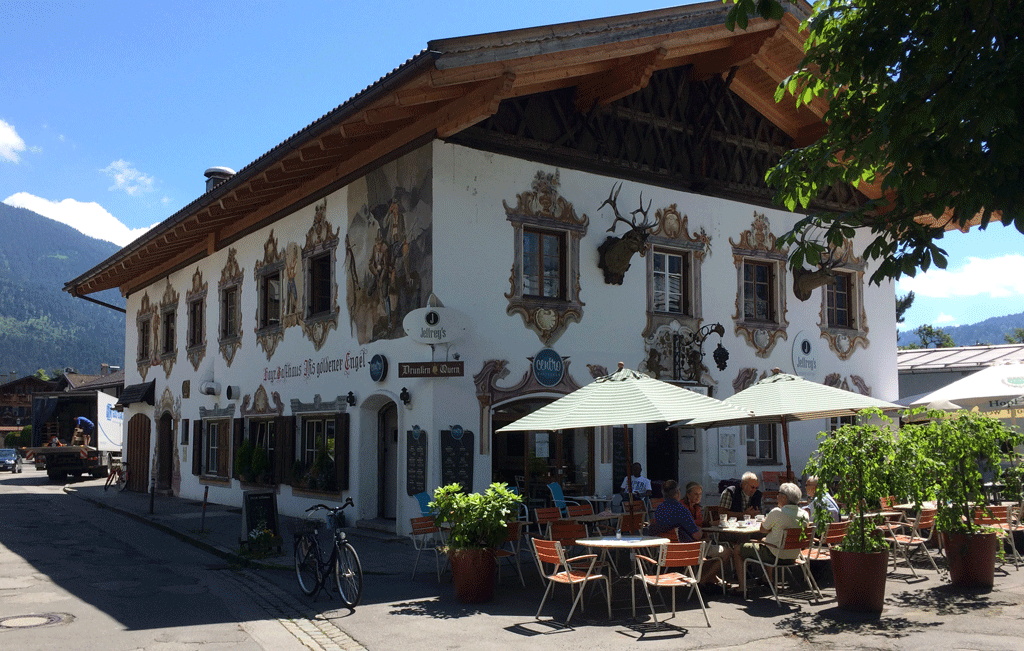
When we get there, we park and walk into the centre. Every single building is decorated with beautiful murals. There is no tourist information about the area we are going to (Pfaffenwinkel – priests’ corner) but we are able to buy a couple of bike maps at a bookshop. Even in German, they are still useful.
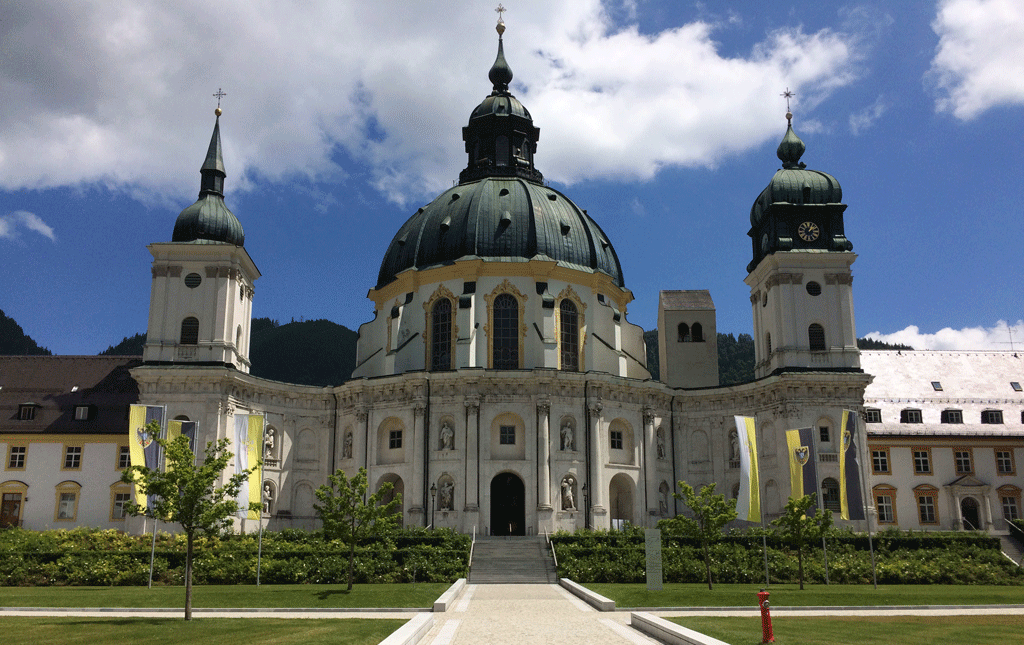
On the way to Peiting, I see an interesting-looking dome off to the right in a place called Ettal. I ask Jean Michel who has had enough driving on winding roads if we can stop. We’re glad we did. Ettal has a stunningly beautiful baroque Benedictine monastery built in the eighteenth century according to the plans of a Swiss-Italian architect. However we don’t anywhere we would like to have lunch.
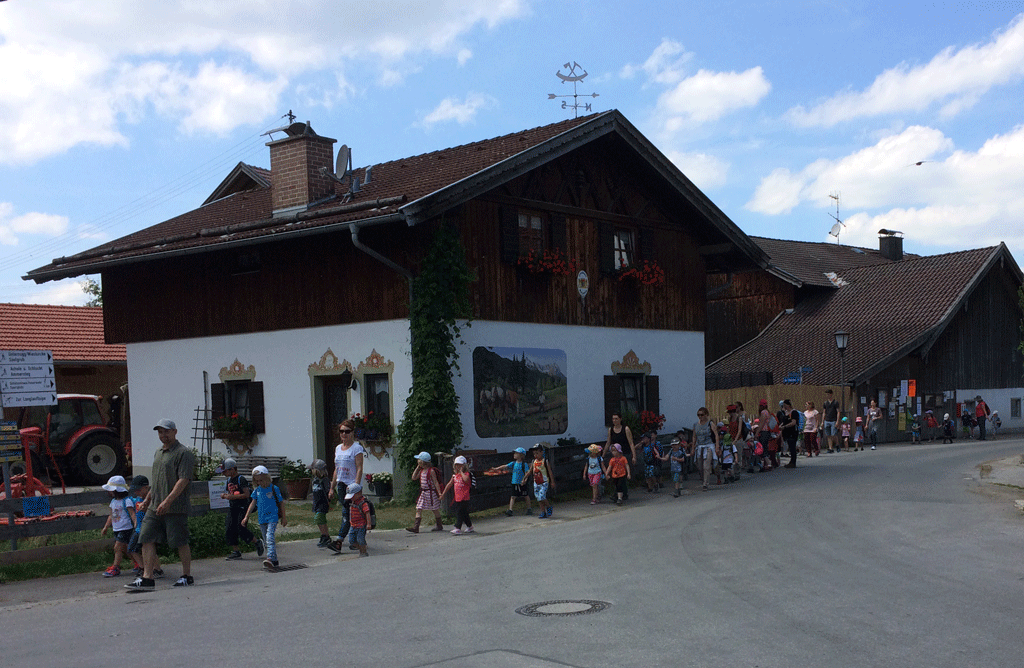
A bit further on, our GPS sends us on a most unlikely road to the villag e of Altenau. We see some people having lunch under blue and white umbrellas at the Altenauer Dorfwirt which according to my iPhone German dictionary means something like the village host. We order Viener Schnitzel (what else?) and some cold white wine. The centre of the village is very lively and we watched school children and tractors file past. Jean Michel has perked up by now.
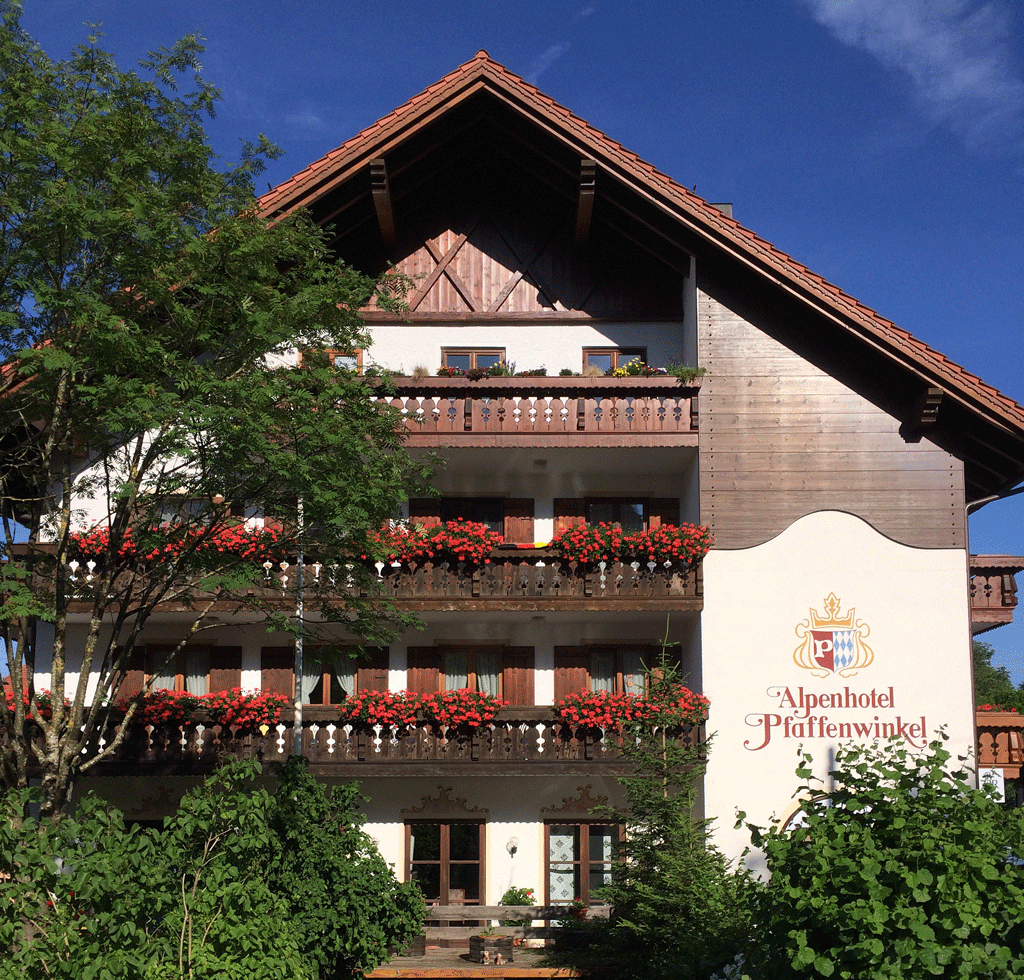
We arrive in Peiting mid-afternoon and are relieved to discover that the hotel room is spacious with French windows on two sides, each with a balcony, and that the floor doesn’t creak. We venture out and discover we are in a pretty little village. Andrea at the tourist office speaks good English and gives us the local maps and information as well as a list of holiday flats. She shows us several bike itineraries including Wies and it looks as though we have enough information not to get lost. She also directs us to the local organic supermarket.
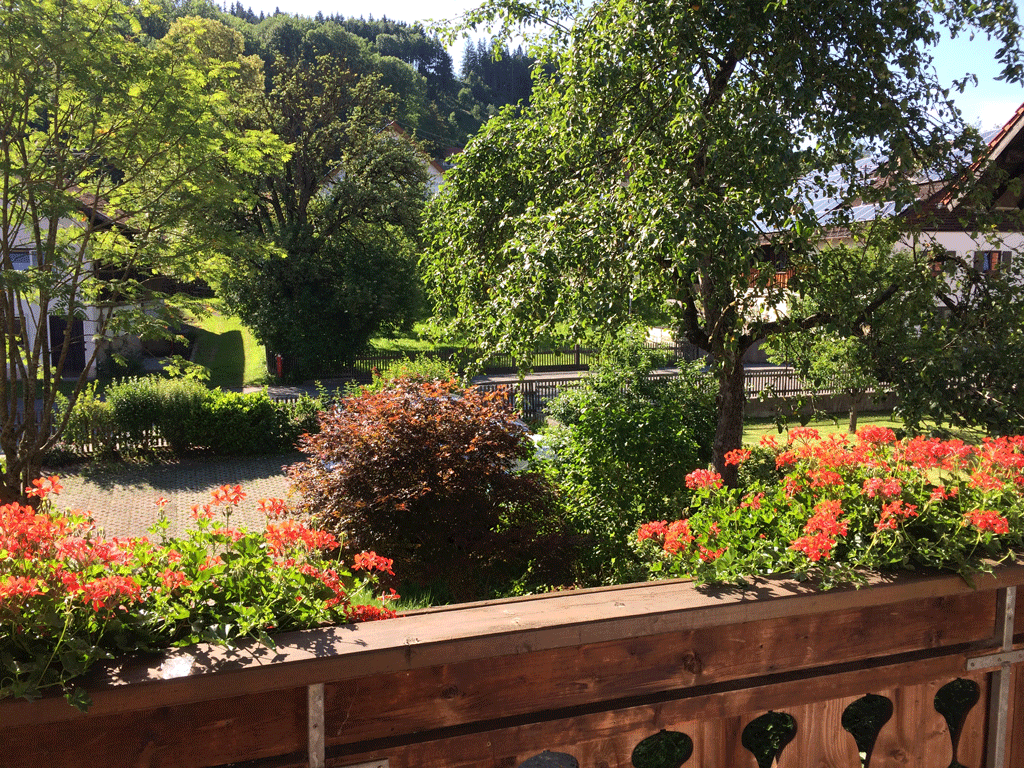
In the evening, after a picnic dinner on the balcony (now why can’t I grow geraniums like that?) and an ice-cream at the Eis Cafe down the road, we try to no avail to find an apartment for a few days. All the websites are in German and they don’t have calendars to indicate availability. I decide to go back and see Andrea next day which we do, after a disappointing breakfast. Are we getting harder to please?
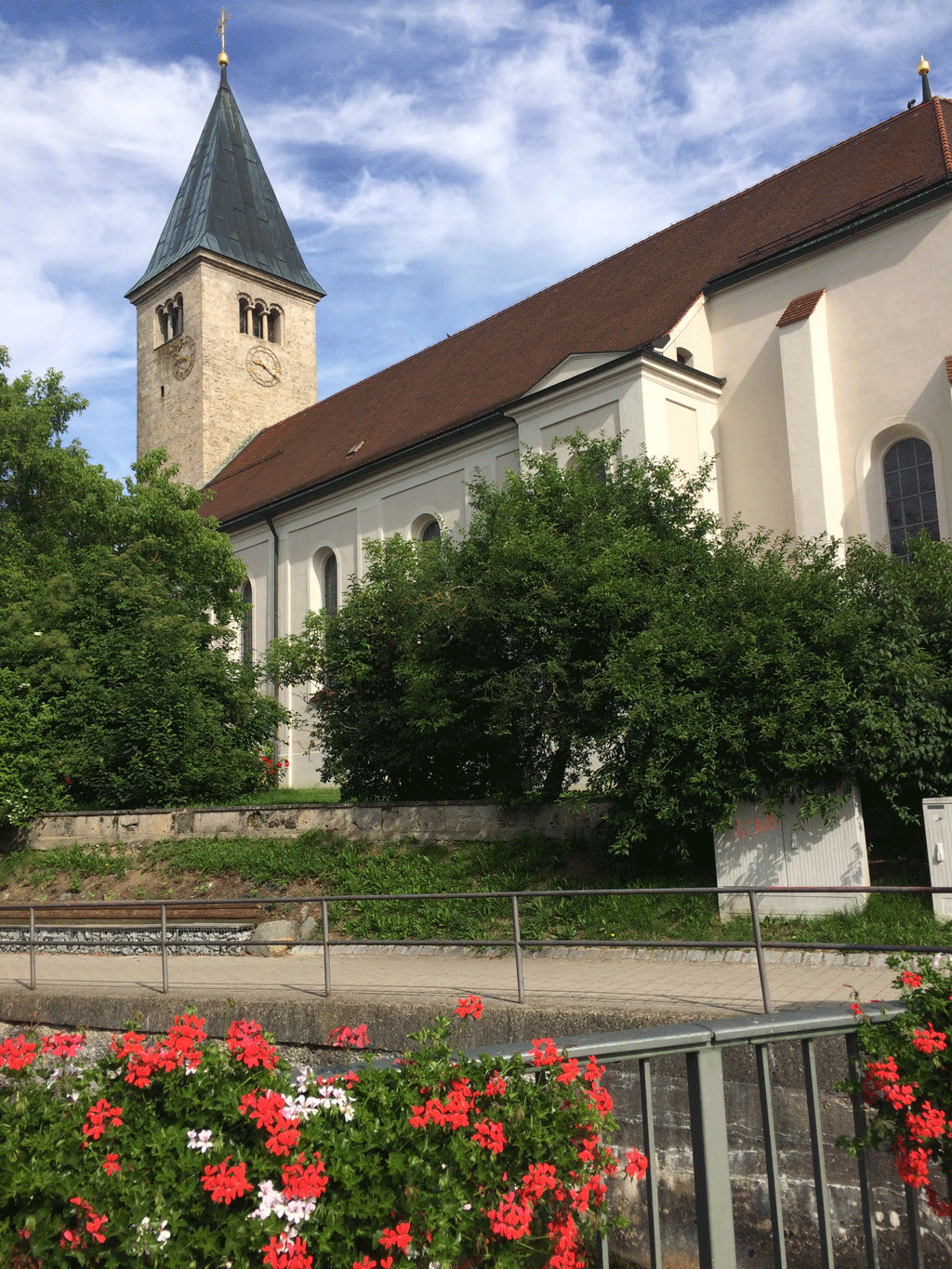
She is very helpful and tries several places. V-lan (wifi) seems to be the main problem, which is surprising. One apartment seems promising and she says she’ll have the answer in an hour. I leave her my cell number and off we go. Our cycling holiday in Germany seems to be off to a good start!




